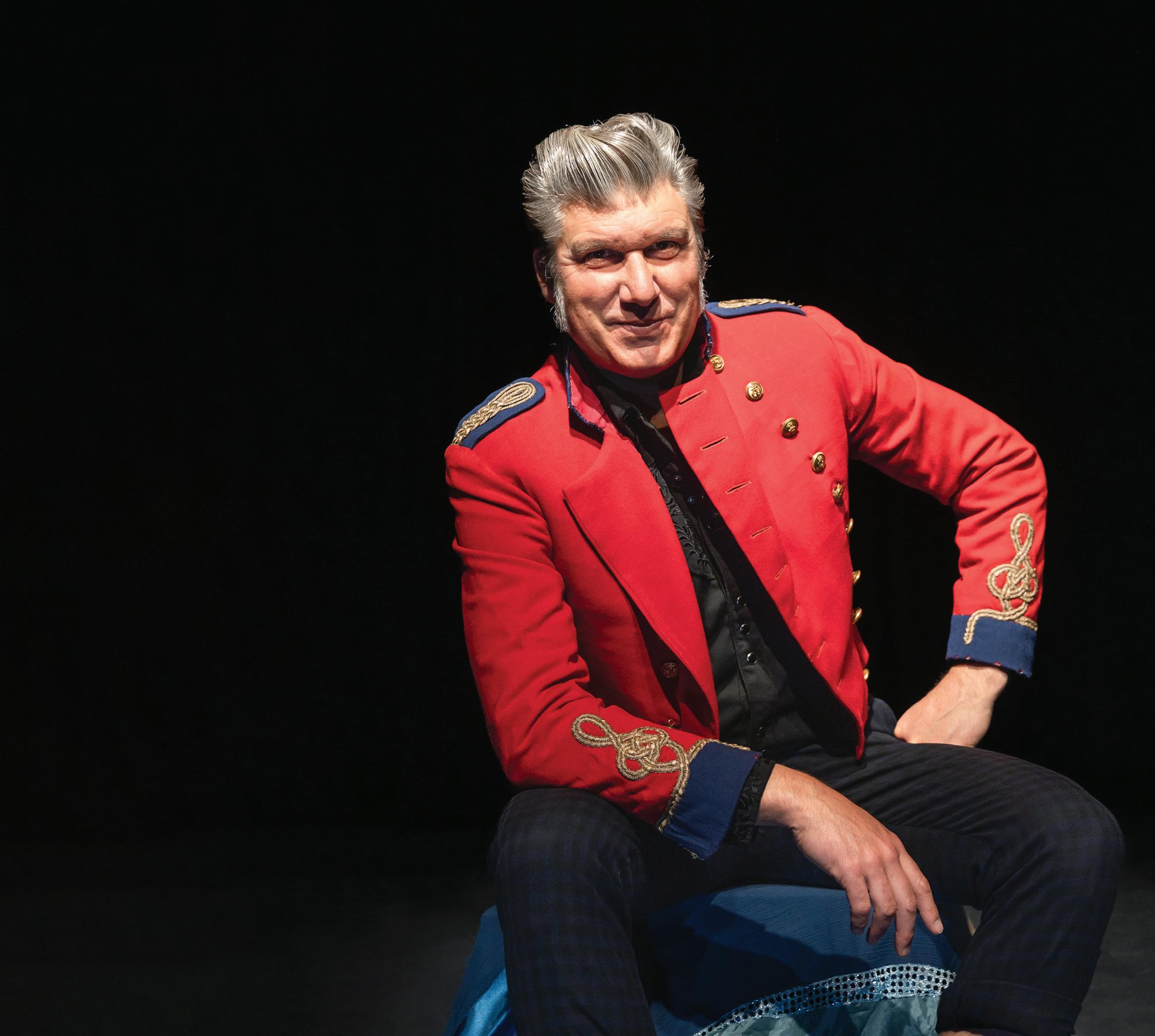

Come on, Parto, give us some policies, please!
ANDREW HUGHES
Democracy demands the Libs get their act together
MICHAEL MOORE
It’s a dead loss getting dead trees removed LETTERS
Timeless focal point for a small garden
JACKIE WARBURTON




Come on, Parto, give us some policies, please!
ANDREW HUGHES
Democracy demands the Libs get their act together
MICHAEL MOORE
It’s a dead loss getting dead trees removed LETTERS
Timeless focal point for a small garden
JACKIE WARBURTON

Entertainer MICHAEL SIMIC (aka Mikelangelo) is the 2025 Canberra CityNews Artist of the Year
















By Elizabeth KOVACS

The CEW Bean Foundation works to honour those lost at war in pursuit of the truth.
It’s named after Australia’s first official war correspondent, Charles Edwin Woodrow Bean, more famously known as the founder of the Australi an War Memorial and as the historian who wrote the history of Australia in World War I.
Established in 2001, the foundation successfully lobbied for a commemo rative space at the war memorial in honour of their namesake and for the broader recognition of war correspondents (that also included photographers, artists, camera operators, sound crews and filmmakers).

The War Correspondents Memorial was dedicated on September 23, 2015, exactly 100 years since journalist Keith Murdoch sent a letter to then prime minister Andrew Fisher about the horrors of Gallipoli.
Its design is a large and highly polished granite oculus that evokes a camera lens or a human eye, and is suggestive of the act of observing or bearing witness to an event.
The oculus is 2.4 metres in diameter, with a single line of commemo -
rative text engraved around the circumference.
The foundation recently hosted a commemorative ceremony to observe the 10th anniversary of the memorial’s dedication.
“The placing of the memorial was very deliberate,” said foundation secretary and former journalist Warwick Costin.
“Representing war correspondents on the edge of the battlefield, the oculus was placed on the very end of the monument garden and looking inwards, as they took in the bigger picture.
“It’s a journalist’s role to see, listen, interpret and get the message across to the world,” he says.

“The memorial was designed to have ripples coming out of the oculus, representing the story being spread across the globe.”
The monument’s inscription says: “Amid dangers known and unknown war correspondents report what they see and hear. Those words and images live beyond the moment and become part of the history of Australia.”
“War correspondents have the hardest gig, it’s not your normal style
Since 1993: Volume 31, Number: 46
“They are often there in the trenches with everyone else, exposed to harm and suffering conditions no one would dream of, all the while working around the clock to keep the world updated.
“As readers, I think it is often taken for granted that someone will always be there, regardless of the risk.
“But if someone didn’t do it, there would be a vacuum of news.”
In two years, the Gaza war has claimed more journalists’ lives than World Wars I, II, Korea, Vietnam,
Bosnia, Afghanistan and Ukraine combined, with about 230 media deaths to date.
Mr Costin said it was also a privilege to honour the Balibo Five murders in East Timor, 50 years on.
The Balibo Five was a group of journalists working for Australian commercial television networks who were murdered on October 16, 1975, in the period leading up to the Indonesian invasion of East Timor on. The journalists were based in the town of Balibo in East Timor (then Portuguese Timor).
Chief Reporter for 7 News Chris Reason gave the closing address.
“They do it because they have to… new young journalists stepping up to take on the most dangerous form of reportage there is,” he said.
“Because they know that it is critical we put independent eyes on a conflict, to record all of the horrors, as well as the heroes.
“To take the grim statistics – and give them names and faces, mothers and fathers, background and context.”
War reporting, he said, dealt with all this and much more.
“It’s high risk, but it’s higherimportance, next-level journalism,” he said.
“And my grave fear is that, the way the world is heading, we will be needing more war correspondents – not less – in the years to come.”
Arts & Entertainment 23-26
Crossword & Sudoku 27
Dining & Wine 26
Gardening 22
Keeping Up the ACT 5
Letters 10-11
News 3-11
Politics 4, 9
Streaming 24

General manager: Tracey Avery, tracey@citynews.com.au
Sales & marketing executives: Damien Klemke, 0439 139001
Ashika Nambiar, 0425 149860 Lisa Clarke, 0413 590811
Editor: Ian Meikle, editor@citynews.com.au
Journalist: Elizabeth Kovacs, elizabeth@citynews.com.au
Distribution manager: Penny McCarroll Cover: Canberra CityNews Artist of the Year Michael Simic. Photo: Shelly Higgs. Story Page 27.
Arts editor: Helen Musa, helen@citynews.com.au
Production manager: Janet Ewen
Graphic designer: Mona Ismail
With
Linda assists with:
• Wills and Testamentary Wills
• Power of Attorney
• Self-managed super funds
• Advice on potential claims against estates
• Advice for blended




Evans
Associate



It’s been a month of contrasts: contrasts with those who want to be in government, those who are, and those who aspire to be part of a government.
And contrasts in politics are important to voters. They want to know there is a meaningful difference between parties and candidates. That you stand for something you believe in. So let’s look at five contrasts shaping territory politics.
To contrast 1: the Liberals. They justified nearly all the criticism they’ve received internally and externally by the events of the first weeks of November. As of time of writing, 33 per cent of the parliamentary party have been former leaders! I don’t know of any other opposition party in Australian political history with that metric. Nor should I. Nor should you.

contrast the Liberals need. The mix of Gen X and Gen Y, gender balance, but… wait… didn’t we just have that?
The Liberals need to be what they haven’t been: united, effective and policies reflective of what Labor isn’t doing. That’s a contrast we want and need to see, even Labor.
not be more stark on the three key areas of policy, party and leadership. Literally night and day, east and west. Example?
media post.
Chief Minister Andrew Barr, top personal vote winner in election 2024, knew this. To prevent ongoing brand damage he used common sense and experience, issuing an apology when Steel couldn’t even say the word, highlighting the contrast between leader in waiting, and leader in power.
It was a clear and ruthless projection of internal Labor politics.
A statement saying: “You may think you are ready. But you aren’t. I’m still what this town, and the party, needs.”
tap. Energy to match any solar panel output on a summer’s day.
And yet this shows the ongoing pressure for contrast. Which contrast 5 also helps show, even if largely forgotten by the prior events. The Greens censure motion on Steel.
It was smart politics. A reminder that they are the third biggest party in the Assembly. An easy and public chance to grab contrast points on Labor.
For all the claims of unity, leadership and strategy, it was Leanne Castley herself who turned the lights out on her time as ACT Opposition Leader. Jeremy Hanson, the loyal deputy, followed her.
With so few of the nine in the parliamentary wing of the party seemingly not touched by the drama, it fell to the only obvious choices for leader and deputy to take the reins, Mark Parton and Deborah Morris.
They are contrast 2 . Perhaps the
So the real contrast they need to be is what the Liberals haven’t been: united, effective and policies reflective of what Labor isn’t doing. That is a contrast we want and need to see, even Labor.
Hopefully, iron sharpens iron. But will it though? Listening tour? No! Just. Do. It.
Mark Parton, please, put up thought-out policies an alternative leader should offer. No more bus lanes across bridges ideas. Just reflect the broad church and work up from there.
So the Liberals dream of being more like contrast 3. Labor.
The contrasts between the Liberals and Labor right now could
When chief minister in the waiting/box seat Chris Steel became the first politician in over a decade censured, understandably, over his handling of the MyWay+ rollout we saw how Labor handled their leadership rumblings.
While Steel likely saw the MyWay+ faults as nothing in comparison to the big items he would be focused on as treasurer, like debt repayment, he would have also thought that the social-media feeds would move our focus on to more important issues, like just who a former Canadian PM is dating, it did not.
Why? Because tangible everyday issues, such as public transport fails, don’t go away unless they are addressed. No, actually corrected, not fixed via some buzzwordy banditry in a vague presser/s or chirpy social
The current and the would-be leader are clearly in, to borrow a social media term, the “it’s complicated” part of the relationship.
And so to contrast 4 . In the midst of all the internal factional going ons, there was Thomas Emerson. Lifting rocks down at the Murrumbidgee with close friend David Pocock, both with muscles on full display, super hero like, but just missing the cool outfits.
Since he’s been elected Emerson has been enjoying acting like a leader. Meet-and-greets with anyone and everyone, and using social media to tell that tale with style and emojis. It’s what we love seeing in a leader – aspiration with no limits. Hope on
Yet it also showed that they are under pressure to differentiate. Leader Shane Rattenbury knows that getting and keeping contrasts in politics is a high-risk, high-return, but necessary game.
The contrasts we’ve seen in the last month are telling us much about who stands for something, and those who are standing for themselves. And that’s a contrast we all need to see.
Dr Andrew Hughes lectures at the ANU Research School of Management, where he special ises in political marketing.





SUCCESS The Importance of Servicing and Security in IT Solutions In today’s digital world, security is crucial for all businesses, big or small. Without proper security measures, organisations face various risks like regulatory penalties, potential lawsuits from clients due to data breaches, and significant downtime or loss of valuable data. These risks can lead to financial losses and damage to the reputation of your company.
The cyberthreat landscape has evolved rapidly over the past few years, becoming more complex and sophisticated. This means that businesses need to stay ahead of potential threats to protect their sensitive information and systems from cyberattacks. Investing in robust security measures is not just a precautionary step; it’s a necessity to safeguard against ever-evolving cyber threats.
At BluePackets, we understand the importance of proactive security measures. We’ve observed a phenomenon we call the “Security Dividend,” where clients who invest in security experience fewer issues and require less reactive support. By prioritising security, our clients not only save money in the long run but also avoid costly outages caused by

6:00pm – 6:30pm start · BYO food & drink 150 Brigalow Street, Lyneham Join us for an evening of Christmas joy with your favourite carols, a short radio-style reading, the St Ninian’s Choir, pianist Linus Lee and other special contributors. Come one, come all and enjoy the celebration as we “Herald in the King” together!
An offering will be collected during the evening for the Uniting City Church Early Morning Centre. Cash or electronic donations are appreciated. Plenty of off-street parking available.


A soldier’s lighthearted letter written to his mother as he sailed to war more than 100 years ago has been discovered in a bottle on a remote beach, reports AARON BUNCH.
More than a century after a soldier wrote a letter to his mother as he sailed to war and his death, it has been discovered in a bottle washed up on a remote beach.
Private Malcolm Alexander Neville’s light-hearted note, penned on August 15, 1916, was found on Wharton Beach, near Esperance, about 750 kilometres southeast of Perth.
“Having a real good time,” the letter pulled from inside a glass Schweppes bottle said.
“Food is real good so far, with the exception of one meal, which we buried at sea.”
Pte Neville, who was killed in action in France in April 1917, aged 28, had departed Adelaide aboard a troopship three days earlier.
April 1917.
“Your loving son Malcolm … Somewhere at sea.”
Handwritten in pencil on paper and rolled inside the bottle with a cork in the top, Pte Neville also asked “the person finding this bottle” to send its contents to his mother in his tiny home town of Wilkawatt in SA.
Esperance woman Debra Brown’s family found the bottle while collecting rubbish on the picturesque beach, saying it was likely exposed when severe winter storms washed away dunes.
“We believe it’s been buried because it’s so well preserved,” she said.
“If it had lived in the ocean for 109 years, it would have sunk to the bottom. The cork would have disintegrated.”
The bottle had a small amount of water in it and Ms Brown pulled the cork out and placed the bottle on a windowsill to dry out.
“The dear old (HMAT) Ballarat is heaving and rolling, but we are as happy as Larry,” he wrote of the ship, which was later torpedoed and sank in letter out.
“You could see that it had a
You are invited to our

had children, there was not a lot of other things going on the internet about him,” she said.
We warmly invite you to join us this Christmas as we take the time to honour and remember your loved one
Friday 5 December, 6 - 7. 30pm
Belconnen Chapel 101 Nettlefold Street , Belconnen, AC T
Please RSVP by Monday 1 December to actoperations@invocare com au
Please email a photo of your loved one and their name with your RSVP Light refreshment s will be ser ved


Private Malcolm Alexander Neville… “Not every man was necessarily as determined. He was keen to do his bit and really wanted to enlist and to make a contribution,” says AWM curator Bryce Abraham.
and had vision problems, then persevered, and sadly, only spent two months on the Western Front before he was killed,” he said.
The amateur sleuth also searched for references to the private’s mother in Wilkawatt and found his great nephew, Herbie Neville, in Alice Springs, telephoning him to share news of the bottle.
“Since then, all of his cousins and sisters and everyone have been in touch with me, and they’re very excited about the whole find,” she says.
Australian War Memorial curator Bryce Abraham says Pte Neville was pint-sized at 157cm – five feet two inches –and determined to serve his country during World War I.
“He’s quite an interesting man who made multiple attempts to enlist, wasn’t allowed to enlist at first because he was too short

The former farmer initially enlisted on April Fool’s Day 1916 and was medically discharged weeks later as unfit, but that didn’t stop him from doing his patriotic duty.
“He seems to have garnered some sympathy from a captain who wrote in support of him so the Australian Service Corps would take him on,” Mr Abraham said.
The private didn’t stay in the logistics unit for long, though, and was soon back in the infantry.
“We know he wore spectacles, so it’s possible he got better ones and they were happy for him to be infantry,” Mr Abraham said.
“Not every man was necessarily as determined. He was keen to do his bit and really wanted to enlist and to make a contribution.”
After a six-week voyage aboard the HMAT Ballarat, Pte Neville disembarked in the UK in September 1916.
He was sent to France in December before joining the 48th Australian Infantry Battalion in February 1917.
“He was with the battalion for only two months before, sadly, he was killed in action on the first day of the Battle of Bullecourt on the 11th of April 2017,” Mr Abraham said.
“It was quite a horrific battle and a disastrous failure, and close to half of his battalion became casualties.”
Pte Neville was buried in France and is one of four members of his broader family killed in the Great War.
The bottle Pte Neville’s letter was found in also had a letter from another soldier, Private William Kirk Harley, who later returned from the war and reportedly married his childhood sweetheart.
“Harley’s letter took a few more days to dry out before I thought that I could pull it out, and hence it was more damaged and it came out in bits,” Ms Brown says.
“He must have been a bit bored and he said: ‘If you find this bottle, I hope you’re in as good spirits as we are at the moment’.”
Ms Brown posted the note to his granddaughter and will also post Pte Neville’s letter to his family.
The bottle with letters inside is the fourth known to have been found along the coastline between Adelaide and Perth after soldiers sailing to Europe in 1916 threw them overboard.
Mr Abraham says soldiers were often bored and wrote letters and diaries to pass the time at sea.
They were also well aware of the “realities of war” following the failed Gallipoli campaign, and soldiers such as Pte Neville and Pte Harley knew what potentially awaited them, he says.
“They knew it wasn’t going to be a great adventure like had been portrayed at the outbreak of the war,” he says.
Survivors and researchers are warning Australians not to ignore symptoms with pancreatic cancer cases on the rise, reports KATELYN CATANZARITI
When doctors told Ron Prouse he had pancreatic cancer, the 61-year-old Adelaide father-ofeight thought he’d been handed a death sentence.
“I’d heard about this stuff – this is the stuff that you die from,” he says. “If you’re gonna get a cancer, it’s the one you don’t want.”
Mr Prouse had gone to hospital in 2022 with severe stomach pain that spread through his back. His blood pressure was dangerously high and the pain wouldn’t ease, not even with morphine.
Scans initially suggested pan creatitis, but further tests confirmed something far more serious.
“Within a week, I was in hospital having an operation,” he says. “It all happened really quickly.”
The procedure, known as a Whipple, is one of the most complex surgeries in the field of medicine.
Surgeons removed part of Mr Prouse’s pancreas, gall bladder and sections of his upper gastrointestinal tract before reattaching what remained. Only about one in 10 pancreatic cancer patients are eligible
the words ‘pancreatic cancer’ for
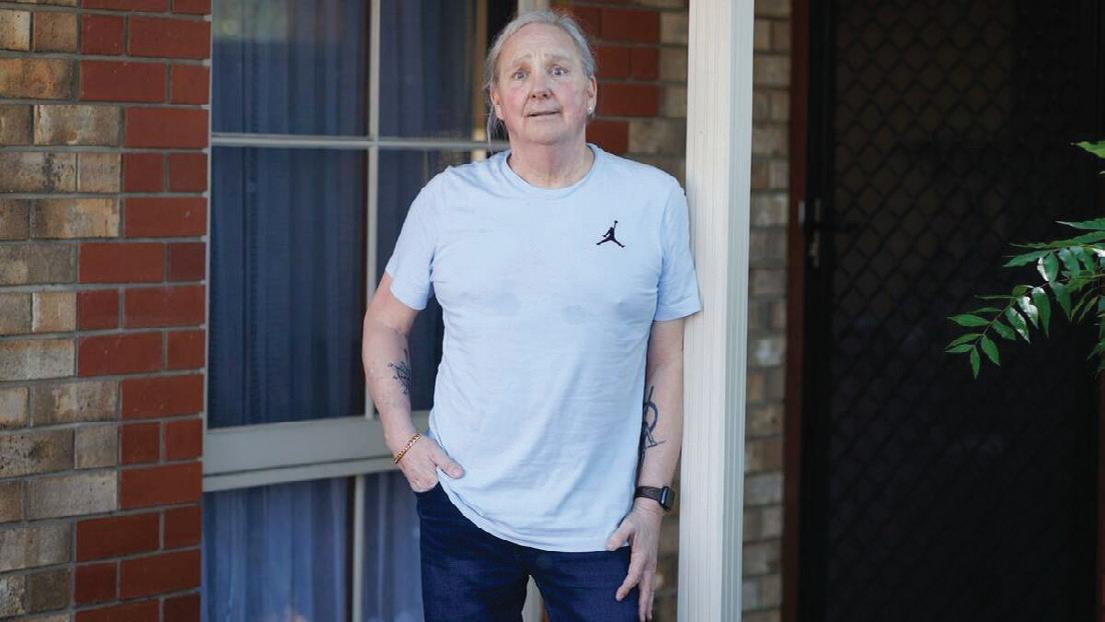
Dr Mark Buzza, head of Research, Innovation and Advocacy at the Pancare Foundation, calls it “the silent killer” – a cancer that’s rising
are so easily dismissed, most patients only get diagnosed when “that ship has sailed”.
“Too many Australians hear
can make itself known early.
“I got very, very lucky,” he says.
“That blockage made me sick enough to get checked.”
According to Dr Buzza, that kind of luck is rare. Symptoms such as jaundice, itchy skin, dark urine, abdominal or back pain, unexplained weight loss, fatigue or changes in appetite are often dismissed or misdiagnosed.
“People think it’s stress or dietrelated,” he says.
“If something feels off, get checked. Early detection gives people the best chance of effective treatment.”
Four years on, Mr Prouse considers himself one of the fortunate few. His cancer markers remain clear, though the aftermath of his surgery means he now lives with type 3c diabetes – a form that develops after injury or surgery.
“I thought I’d dodged it, but eventually what was left of my pancreas couldn’t keep up,” he says.
“Now I’m one of the walking wounded. But it’s manageable – and it’s better than the alternative.”
He’s sharing his story during Pancreatic Cancer Awareness Month in the hope others won’t ignore early warning signs.
“I was healthy – running 10km two or three times a week. I was going to the gym four or five times a week,” he says.
“I didn’t see myself as an old, decrepit person dying of an ‘old person’s cancer’.”
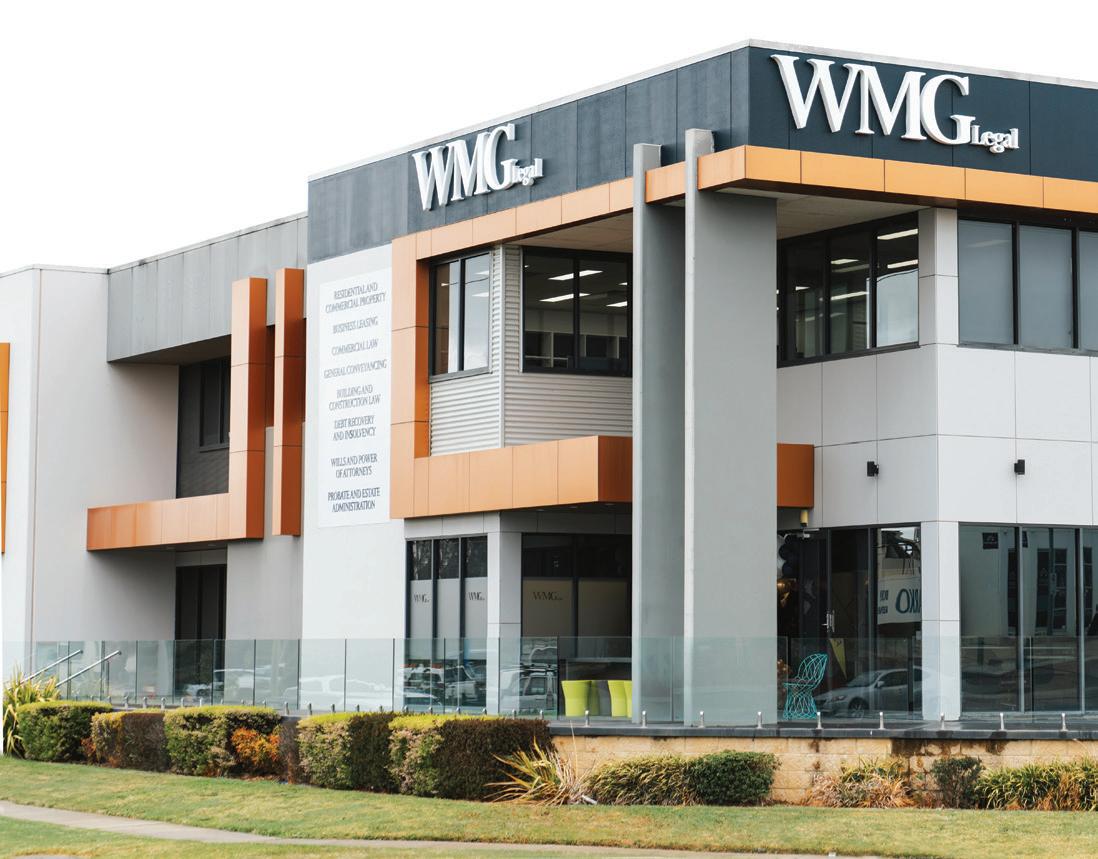

‘If he were to confess and show public remorse and work for charity pro bono it could greatly help to redeem him’
The public scandal involving the former Prince Andrew has been a tragedy for all concerned, not least in creating a schism between King Charles and his younger brother, say ROSS FITZGERALD and
Although he persists in denying any wrongdoing, Andrew Mountbatten Windsor – the Royal formerly known as Prince Andrew – has become a pariah in the UK and around the globe.
After further damaging revelations about his alleged misbehaviour in the late Virginia Giuffre’s book Nobody’s Girl, his situation became untenable.
More than that, it could irreparably damage a Royal brand that Charles has spent years mending. Andrew was stripped by the King of all his titles and honours and instructed to leave his Royal Lodge at Windsor, which to some was too little too late.
Yet despite these unprecedented actions by the King, Andrew remains eighth in line to the throne. Perhaps to prevent Andrew from going public via a book or TV deal (which could only make things worse) King Charles will be paying him a substantial annual stipend. To keep him quiet and out of view if nothing else.
But while Andrew will never be a Prince again, there is possibly a way back for his public dignity, with a seminal event in British political history providing a guide or exemplar.
There are some strong similarities between Andrew’s current parlous situation and that of
John Profumo, a senior politician in Britain’s Conservative Party, who was Secretary for War from 1960 to 1963 under Prime Minister Harold MacMillan.
conducted a sexual relationship with a 19-year-old “model”, Christine Keeler, a situation he denied later in the House of Commons.
forced by relentless media pressure to admit he had lied to the House, a cardinal sin in British politics. Profumo resigned from office in public disgrace. Soon after, he admitted to his second wife, Valerie Hobson, a much-loved British actress, his sexual involve ment with Keeler, who had also been in a sexual relationship with a Russian spy.
Ward, had introduced Keeler to Profumo, and she was also simultaneously involved with Yevgeny Ivanov, whose formal position was Russian naval attaché.
was later put on trial for living off the “immoral earnings” of Keeler and her friend, Mandy Rice-Davies.
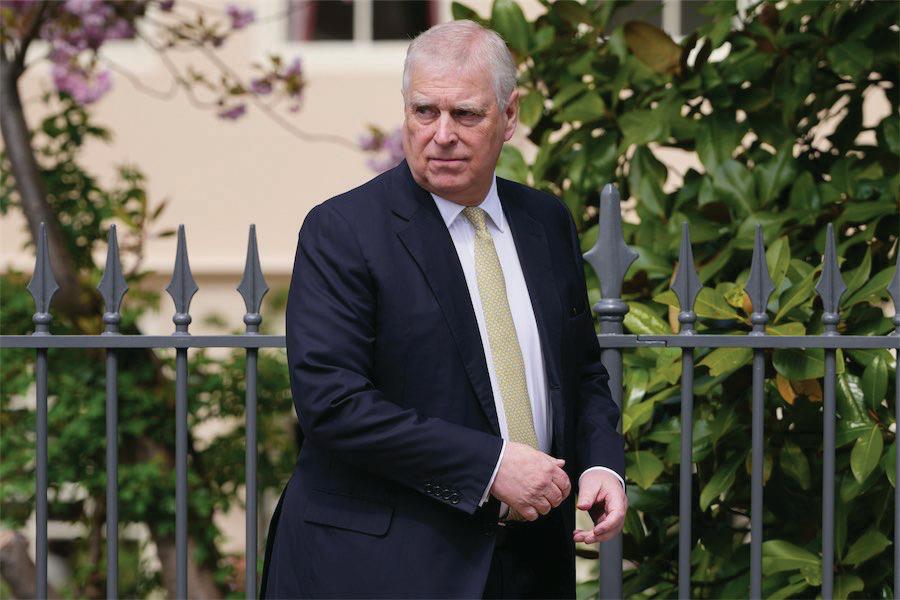
Shortly after his conviction Ward ended his



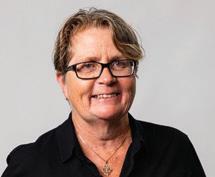

John Profumo…
charity work finally redeemed his tarnished reputation.

Just as the Profumo Affair resulted in the suicide of Stephen Ward, so too we have seen the apparent suicide of convicted serial sex offender Jeffrey Epstein, and also of Virginia
In her best-selling memoir, recently and posthumously published, she has again accused Prince Andrew of having sex with her when she was 17, an arrangement she claims was organised by Epstein.
Although this certainly marked the end of Profumo’s political life, he was eventually able to recover his public dignity. This was due to his good works at Toynbee Hall, a charity operating in London’s East End. Profumo worked there as a volunteer for the rest of his life and was able to use his “political skills and high-level contacts to raise large sums of money”. This tireless charity work was a very effective form of public remorse that finally redeemed Profumo’s tarnished reputation.
Indeed, well-known social reform and morals campaigner Lord Longford, who eventually became a friend, was quoted as saying he felt more admiration for Profumo “than (for) all the men I’ve known in my lifetime.”
In fact, there are strong similarities between Epstein and Stephen Ward. Both were sexual procurers of young women for the sexual gratification of much older men, although Epstein was worse and working on an almost industrial scale.

If he were to follow Profumo’s example, it is possible he could turn his life around, but that would require the sort of honesty he has scorned thus far.
In 1975 Profumo, who died in March 2006, was appointed a Commander of the Order of the British Empire. According to Wikipedia, Profumo, “received the honour at a Buckingham Palace ceremony from Queen Elizabeth II, signalling a return to respectability. In 1995, former Conservative Prime Minister Margaret Thatcher invited him to her 70th birthday dinner, where he sat next to the Queen.”
Despite the very public scandal in 1963, Valery Hobson was a strong force in her husband’s rehabilitation. She remained married to Profumo until her death in November 1998.
There are important lessons to be learned here for former Prince Andrew.
If he were to confess and show public remorse and work for charity pro bono it could greatly help to redeem him. Although if he did admit his guilt in the matter there may be some legal action that would spell his doom in the public eye.
Andrew still has powerful contacts that could be invaluable to any potential charity work although he has not shown any sort of contrition thus far. Rather, he seems to be in a kind of death spiral and might be considered a risk of severe self-harm, an outcome of no value to anyone.
As for Andrew Mountbatten Windsor, if he were to follow Profumo’s example, it is possible he could turn his life around, but that would require the sort of honesty he has scorned thus far.
While he will be out of sight in his new home at Sandringham, will he also be out of mind? Some of his more severe detractors have suggested he should go into exile, like Edward VIII and Wallis Simpson. And many query if Andrew actually deserves another chance.
We should not forget, however, that he served in the Royal Navy from 1978 to 2001, during which time he became a helicopter pilot and completed the Royal Marines All Arms Commando Course – receiving the coveted Green Beret in the process.
He also saw active service in the Falklands War, again as a helicopter pilot serving aboard HMS Invincible. His senior officer, Commander Nigel Ward described him as “an excellent pilot, and a very promising officer”. It is generally recognised that because of his Royal Family connections he could have avoided a combat role in the war, but chose not to do so.
His naval career extended well past the Falklands War, and he served in various other roles, including that of Force Aviation officer aboard HMS Campbelltown when this vessel was Flagship of the NATO Force in the North Atlantic. But in a further blow the former prince has also been stripped of his position as an honorary vice admiral in the Royal Navy.
With his substantial military service, together with his extensive Royal experience, Andrew could still have much to offer Great Britain. It will be a matter of history to see if this is so.
Ross Fitzgerald AM is emeritus professor of history and politics at Griffith University. Dick Whitaker is a widely published author and lecturer in Australian history.
The impact President Donald Trump is having on American democracy raises concerns for the free world. Australia is not exempt.
The combination of preferential and compulsory voting in Australia helps prevent domination by powerful forces that attempt to drag voters to the extremes of the political left and the political right.

A respected constitution, a strong opposition and a vibrant media are critical elements of effective democracies.
Although Australians can be proud of the sophistication of our electoral systems and the general lack of corruption in our politics, complacency makes things worse.
The next state election will be in SA in March. Recent polling shows Labor incumbent Premier Peter Malinauskas winning an extraordinary landslide.
Looking at recent polling, Adrian Beaumont wrote in The Conversation: “On a uniform swing, the Liberals would be reduced to three to six of the 47 lower house seats, with leader Vincent Tarzia losing his seat.”
Considering the trouncing that the Liberals received under the leadership of Peter Dutton at the last federal election, Australians should be concerned
about the weakness of the Liberal Party across the southern states and the west of Australia.
Such concerns are exacerbated at the federal level by the constant undermining of the leadership by the chest thumping of the right of the party, and the inability of Opposition Leader Sussan Ley to pull them into line.
In Tasmania, the Liberals retained government after an early election. However, the government in that state does have to work with a minority in both houses of the parliament. The LNP in Queensland and the NT seem much more stable with their unicameral systems.
Labor governments in the other jurisdictions seem to be much more stable. None more so than in the ACT where Labor has ruled, largely
The implosion of the Liberal Party across most of Australia undermines our democracy. A strong opposition is a key element to keeping the government on its toes.
unchallenged, since the end of 2001. Even with a minority government, the likelihood of a Liberal chief minister in the foreseeable future seems remote.
The implosion of the Liberal Party across most of Australia undermines our democracy. A strong opposition is a key element to keeping the government on its toes.
Although there are many independents and smaller parties working hard to maintain accountability, the threat of an alternative government taking over any time soon seems highly unlikely.
With the future of the Liberal Party in such dire straits, the temptation is for Labor governments to rest on their laurels. The consequence is lack of accountability of the ministers and their governments, and a more complacent public service.
Fortunately, the calibre of public servants in Canberra, whether local or federal, mitigates the worst of these problems. Even so, when a government
is secure, when an opposition is weak, there is a greater likelihood of things going awry.
The successful censure motion on ACT minister Chris Steel, over what was seen as his disastrous handling of rollout of the MyWay+ system through the ACT public transport network, illustrates the power that non-government MLAs can exercise with a minority government.
Although there remains little likelihood of a change of government with the currently dysfunctional opposition.
The most challenging focus for the ACT opposition should be the state of our territory finances. On September 5, Standard and Poor’s downgraded the ACT’s credit rating yet again. It is now at an all-time low of AA+ rating from its peak of AAA+. A long-term lackadaisical government that does not fear being replaced.
In the US both Trump and Robert Kennedy Jr are doing dreadful damage to health systems and support for ordinary people.
Electoral systems do matter.
Efforts of the Republicans supporting Donald Trump for president were quite remarkable. Trump used the “first-past-the-post” electoral system
to his personal advantage by wooing Kennedy.
Kennedy traded his voting support as an independent (who stood no chance of being president) for the position of secretary of health, and Trump removed a candidate who would have taken precious votes from him.
There remains hope that the US will be able to withstand the democratic storm that is Donald Trump. The success of the Democrats in the elections that were run in the last week may yet prove that even a relatively crude form of democracy, as used in that country, may still show that the people can hold governments accountable.
Pertinent now is the famous saying attributed to Edmund Bourke: “The only thing necessary for the triumph of evil is for good men to do nothing.”
Michael Moore is a former member of the ACT Legislative Assembly and an independent minister for health. He has been a political columnist with “CityNews” since 2006.

•
•
•




Columnist Robert Macklin is right to say that Deep Time is a great show (“Three rousing cheers for the iconic ABC”, CN October 30).
But he’s presumptuous in thinking that it “fills the void”, as regards contemporary immigration policy.
Albanese Labor has pushed net-migration to levels never previously envisaged, growing our “Big Australia” to “Huge Australia”. Their first-term (2022-25) tally of around 1.3 million smashes the egregious Rudd record by 70 per cent and more.
Now they boast of “cutting immigration” by 40 per cent, rather omitting to add, that this would still leave a stratospheric intake of well over 300,000 annually, nigh on four times the historical average.
Where does this leave hapless voters?
According to Mr Macklin, there are “protesters for and against [mass migration] on racial or religious grounds”.
Actually Robert, it’s like this: from covid onwards, every reliable poll finds that voters want lower or much lower migration. In a couple of the more recent polls, there is a majority favouring net-zero migration or zero population growth.
Why did the Marches for Australia arise, and why do they continue to happen? It’s not because voters are “racists” or “neo-Nazi” dupes, as the government and its allies snarl.
No, MfA is simply filling a political vacuum. Voters can see that our all-time crisis of rental
and housing unaffordability is actually a selfinflicted crisis of way more immigration than we can adequately absorb year on year.
And see equally clearly, that LiberalLaborGreenTeal has no interest in responding to their concerns. Instead, the house-trained Liberal leader prefers to argue the toss over the Labor leader’s boomer T-shirt.
Stephen Saunders, O’Connor
Some months ago I had a letter published in City News suggesting that uni students be careful about participating in illegal demonstrations and posting critical comments that could be misunderstood on social media as its could affect their employment prospects.
Letter writer June Kirvan criticised my comments in rather nasty terms, but I did not respond as everyone is entitled to criticise.
My concerns were justified early last month when a survey of companies revealed that new research showed 77 per cent of recruiters review social media accounts, 97 per cent of them said they would reject someone based upon what they posted and that 27 per cent of Gen Z had been rejected because of social media comment.
However, one of the things I object to when I see it in the media is someone attributing things to a person they know nothing about.
June Kirvan commented that, and I quote: “Imagine someone holding a position who has no knowledge of world history”.
For the information of Ms Kirvan and your readers who might have been influenced by her, my ANU degree in economics and politics included a major in international relations, I worked for several years in the Trade Commissioner Branch here and overseas, I was a trade promotions officer in the Department of Trade and Industry (which included overseas stints), was a desk officer in the International Trade Relations Division responsible for Papua/New Guinea, NZ and the Pacific Islands. I also worked on CHOGM, APEC and ASEAN and various other International bodies.
So June Kirvan, I have a wealth of experience in world history. How about you?
Ric Hingee,
Duffy
Little has been written about the possible role of religion in reducing tensions in the Middle East.
I hope that the Gaza peace plan will ultimately be fully implemented and that peace can be sustained with input from the inherent religions, Judaism, Christianity and Islam, all of which originate in the Middle East. The people of Gaza deserve nothing less.
These faiths are known as the Abrahamic religions, each espousing the same God and coming from the common pedigree of Abraham.
They could meet regularly and determine
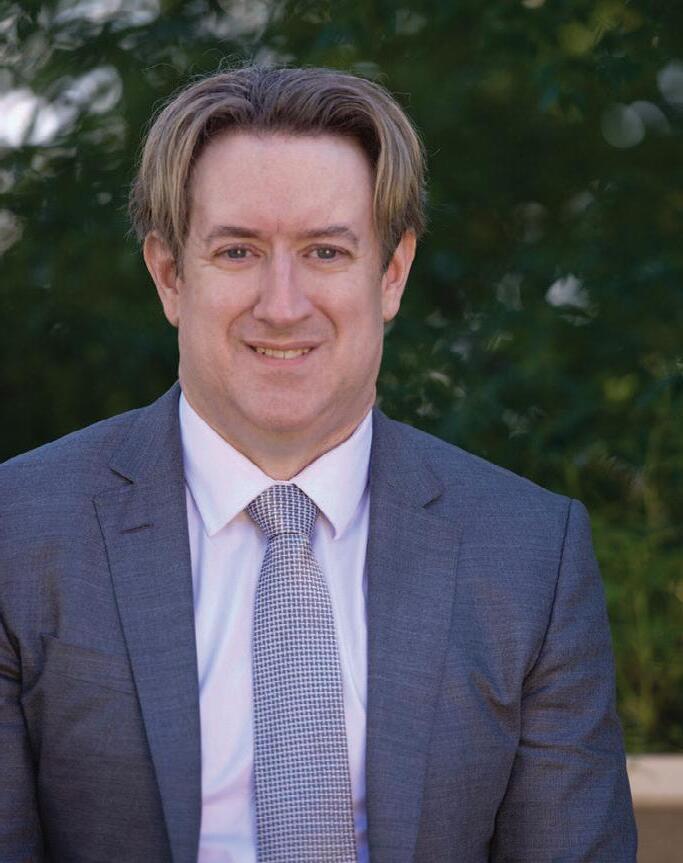
how to best co-exist and live peacefully alongside each other, in the same way as Pope Leo and King Charles have tried to reduce tensions between their respective faiths.
They could set up a mechanism whereby each is consulted in an effort to reduce emerging conflicts.
In meeting together, they will also come to the realisation they have more in common than they may realise and that conflict in the Middle East reflects poorly on them and the promotion of God and religion. It could result in a win-win situation.
This will not happen overnight – the Leo-Charles meeting took place after an interval of 500 years. However, in a region as volatile as the Middle East, with patience and the right intentions, the idea is worth exploring so that neighbourly respect, love and peace can prevail, especially important in areas like the Al-Aqsa Mosque and other shared sites.
Herman van de Brug, Holt
Liberal MLA Jeremy Hanson fails to acknowledge extensive briefings (over many years) he has received about the harms of alcohol and other drugs (AOD).
Columnist Michael Moore’s excellent article (“Is Hanson right to decry the drug ‘experiment’?”, CN October 30) reiterates

the importance of evidence about AOD and harm reduction sectors’ cost effectiveness and impact.
For every $1 invested in AOD treatment, $5.40 is returned in benefit to the community. Also, every $1 invested in harm-reduction programs, such as needle and syringe programs, $27 is returned in community benefit.
David Templeman, former president, Public Health Australia
Sue Dyer (letters, CN October 30) dismisses Barnaby Joyce’s stance against climate change action and net zero as highly misleading and out of touch and suggests that he is doing nothing to help the coalition from gaining broad electoral support.
Ms Dyer is under the misapprehension, as are countless commentators of the left, that by supporting the government’s climate policy, the coalition would gain electoral support. In fact, it is quite the opposite. The coalition won three elections in 2013, 2016 and 2019 opposing climate change action and net-zero.
Tony Abbott won the 2013 landslide when he famously said “climate change is absolute crap”.
Ms Dyer also says Joyce would be tempted by a six-year Senate term, possibly with One Nation. This is unlikely because he served as Senator for Queensland (2005-2013), before being elected as the popular member for New England and increasing his margin in the May 3 poll.
Paul Temby, via email
• Make the rules work for you, to enjoy retirement on your terms.
• I have 23 years of experience in advising retirees in the Canberra region.
• Extensive experience in government super such as CSS and PSS.
• Centrelink advice and implementation.
• Is a redundancy right for you at this time?

What a paradox: the ACT government is spending a significant sum of taxpayers’ money on repair of (un)damaged roads (and footpaths).
However, to get dangerous, dead trees removed by our local govern ment requires the “patience of Saints”.
Along Chuculba Circuit, Girlang, you can notice a number of them.
I have already reported them to the relevant authority, but only one was removed sometime ago. The rest are waiting for a storm to drop a branch or two on an unsuspecting taxpayer.
When I enquired, cost, cost and cost was mentioned to me. Is it possible that the unwanted tram is consuming all the budget?

Well, our jail is overflowing with a significant number of able bodies who would gladly do something useful and safe for society (for change).
Why not invest in training and, under strict supervision, use these freshly discovered talents for the removal of dangerous, dead trees.
Yes, there will be a cost, however, in comparison with the cost for each unproductive inmate, this program would be actually cost positive.
Erwin Wegner, Giralang
The Scanlan Foundation Research Institute’s 2024 social cohesion survey found only a third of Australians trust federal or state governments, at least most of the time. This was a decline from 44 per cent in 2021. The dissatisfaction was found to be strongly related to economic and financial pressures with those renting, struggling financially and/or living in disadvantaged neighbourhoods being the least trusting. It would not surprise if trust in government remained low or declined further given Robodebt, the failure to genuinely address the housing crisis (including taxation reform) and
associated growing inequality; climate change and the increasing reluctance of governments to explain to the community the basis of decisions. Failure to competently and transparently address such concerns is likely to lead to further decline in support for Labor and the Coalition, an increase in support for independents and populist (and ignorant) parties such as One Nation; and provide a playground for an increase in extremism.
Mike Quirk, Garran
Had a look at the history of your land rates lately? I tracked mine from 2001 to the present day. Not surprised at the results – particularly from the time Barr took over the reins of the treasury – from $46.08 a month to the present day $261.40 a month, a factor of 5.6 increase. And Chris Steel has us in his sights for further increases. He has already attempted to get us to pay an additional $200 in our rates to finance the health debt only to be knocked back to $100 by an angry set of ratepayers.
What a tragedy that we live in a “progressive” Labor town. The rusted-on Labor voters allowed a Labor government to be formed with 34 per cent of the vote. What’s “progressive” about a government that has had its financial rating lowered twice? As a result we pay huge amounts of interest on the state borrowings resulting in fewer teachers, nurses and police employed. This indebtedness must be paid. Guess

who will pay and how much we will pay; $261.40 a month will appear a dream figure in due course. So look at what you are paying now and double it because there is ample evidence that a huge figure will be required.
John Quinn, Spence
Melanie Glover (letters, CN November 6) may have confused grey native Australian Noisy Miners with brown Indian Mynahs (“Bill’s petition to spark action on myna bird pests,” CN July 19, 2023).
Noisy Miners seem to have filled the ecological gap that was opened by declining numbers of Indian Mynahs.
Leon Arundell, Downer
In law, we are all innocent until proven guilty and the big-poppy syndrome is alive and doing very well in the case of Prince Andrew. Whatever this man has done; he has not been charged, tried and proven guilty of any offence in a court of law.
All “evidence” that I have seen is of old photographs, personal statements (some by those that have been proven to be of doubtful character and the like).
The message is really for Prince Andrew to be charged, answer to a court of law and be
found guilty for whatever the charge(s) is/are. It’s not for all the knockers to continue with all this ridiculous nonsense of stripping him of this and stripping him of that or wanting street names changed and all the other unproven action.
However, some facts cannot be changed, for instance: he has been born into royalty and like it or not, he is still a prince. He also fought in the Falklands War and he earned his medals.
He may not be squeaky clean but give the man a fair go… either put up or shut up.
Graeme Edwards, via email
Letter writer Sue Dyer (CN October 30) accuses Barnaby Joyce of misleading anti-climate action and net-zero rants.
Recently, it was revealed that climate minister Chris Bowen had been hiding the real cost of net zero and Labor’s reckless renewable nightmare.
Power bills have risen dramatically even after the incumbent Labor party promised a reduction of $275 due to their renewable rollout. Planned wind farms have been canned and the promise of hydrogen gas has, well, exploded. Experts and scientists have told us that even if we stopped using fossil fuels it would have little impact on the climate. Yet the Labor Party persists in their renewable energy scam. It seems that the highly misleading climate action and net-zero zealots will do nothing to reduce the cost of electricity bills or firm up our energy needs for the future.
Ian Pilsner, Weston
For more than 30 years, Elect Printing has been a part of the Canberra community, offering their services for schools, govern ment departments, small businesses and trade works.
“We are Canberra’s largest privately owned printing house,” says director Maria Nesic. “It’s something we pride ourselves on.”
Employing 24 staff, Maria says their “for the community, from the community” approach extends beyond the company’s printing services, sponsoring support programs such as the Canberra Ronald McDonald House and Karinya House.
“We have some of the best printing equipment in the region, including cuttingedge digital presses, a new Heidelberg press and traditional foiling and embossing,” she says. With no project too big or small, Maria says they can print anything from a single print-out all the way to 5000 books.
Offering bespoke personalised wedding stationery with cutting edge finishings and embellishments (foiling, embossing, custom shapes), Maria says the friendly team are there to talk customers through the entire process.
Maria says they bring beautiful finishes to every job, delivering a “product of quality that’s made with care by a passionate team.”
“Contact us online or just come in for a chat to see how we can help you,” she says.
Elect Printing 112 Wollongong Street, Fyshwick. Call 6280 6925 or visit electprinting.com.au
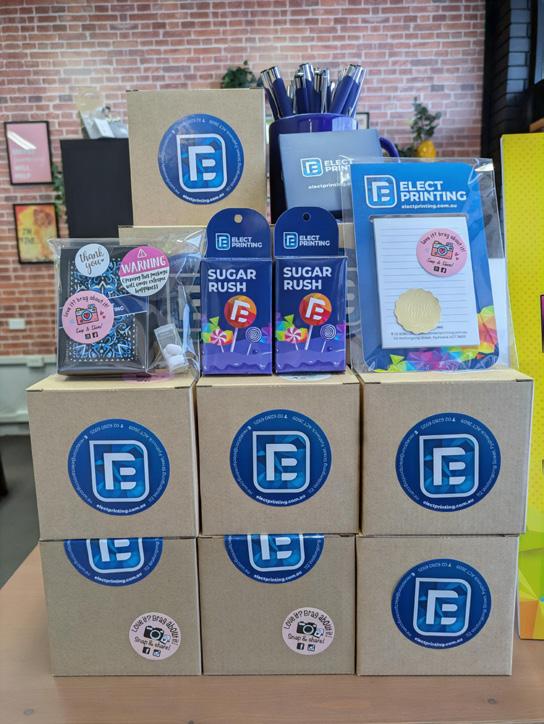
Your wedding jewellery should be as individual as your love story. At Venetia Major – Bespoke Jewellery, we specialise in custom-made engage ment and wedding rings, crafted by hand in our Canberra studio to perfectly reflect your style, story and commitment.
Whether you’re drawn to timeless elegance or something distinctly modern, we’ll guide you through every step – from initial sketches to the final polish – ensuring your rings are uniquely yours.
Our bespoke designs are available in platinum, 18-carat yellow and white gold, and can be classic, diamond-set, or shaped to fit seamlessly around your engagement ring.
For grooms, contemporary black metals such as zirconium and tantalum are increasingly popular, offering a bold and durable alternative to traditional precious metals.
Each ring is individually made to last a lifetime, with comfort, craftsmanship and meaning at its heart.
With more than 20 years of experience in fine jewellery design and manufacture, Venetia and her team bring meticulous attention to detail and a deep respect for the sentiment behind every piece.
Together, we’ll create symbols of your love that are not only beautiful, but deeply personal — rings that will carry your story for generations to come.
Book a design appointment today and begin creating the perfect rings for your wedding story.
Venetia Major – Bespoke Jewellery 3/8 Victoria Street, Hall. Call 6230 9587 or visit venetiamajor.com













Wildbark is a visitors’ centre on the edge of Mulligans Flat Woodland Sanctuary, in the north of Canberra, a gateway through time, taking you back to an era when native animals were not threatened by extinction.
Celebrate your special day with us with your ceremony backdrop of native eucalypts, rosellas and kangaroos, your reception in our Yellowbox Gallery with floor to ceiling windows overlooking the Sanctuary as the sun sets.
Already have your wedding booked but looking
for a photo location?
Book one of our rangers to take you and your photographer deep into the Sanctuary for that perfect shot!
Contact our events team for a visit to see our beautiful space!
Wildbark Call 6169 6835, email events@wildbark.org or visit wildbark.org



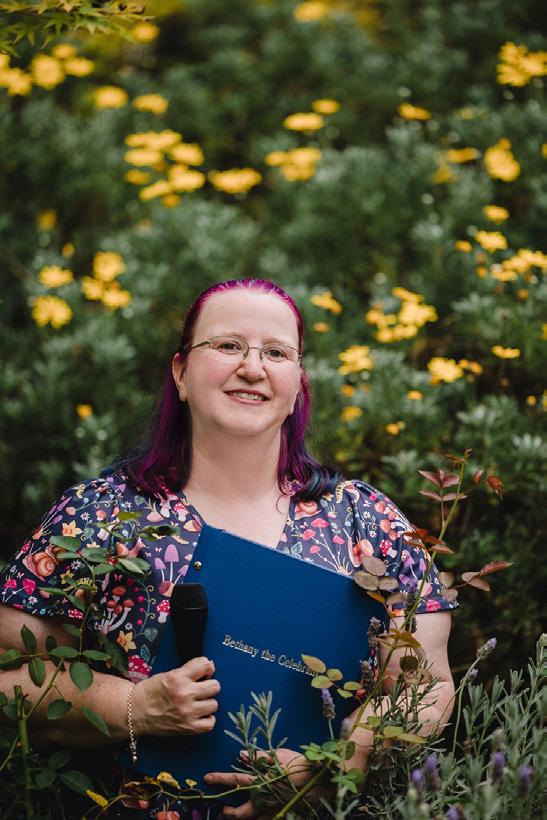
Canberra celebrant Bethany Freeman-Chandler brings a warm, caring and professional approach to every ceremony she leads. With a relaxed presentation style, she focuses on creating weddings that genuinely reflect the couple, rather than relying on prewritten scripts. Bethany also performs vow renewals, naming days and life celebrations, tailoring each service to suit the people and the moment being honoured.
“I believe your ceremony should feel like you,” Bethany says. “I don’t use generic templates. I take the time to get to know you both and write something that is personal, meaningful and true to
Bethany officiates both small, intimate weddings and large, formal celebrations, ensuring each one receives the same level of preparation and care. She welcomes involvement from family and friends and offers guidance with writing personal vows so they complement each other naturally.
She also liaises with venues, photographers and coordinators to ensure the ceremony runs smoothly and stays on schedule. “I want the day to feel calm, well-organised and stress-free,” she says. “My job is to manage the details so the couple can focus on
Bethany handles all legal requirements and paperwork, clearly explaining each step so couples feel supported and confident.
For couples seeking a celebrant who listens and delivers with genuine care, Bethany the Celebrant offers a personalised and seamless experience.
Wildbark at Mulligans Flat sits at the edge of Mulligans Flat Woodland Sanctuary, Australia’s largest single Box-gum Grassywoodland area managed for conservation.
From Ceremonies to Receptions and even wedding photo locations, we are excited to help you to create your special day! Our team is here to bring your dream wedding to life with packages to suit most budgets.

Bethany the Celebrant creates personalised, relaxed and meaningful ceremonies that reflect the people at the heart of the moment.
With clear guidance, thoughtful preparation and a calm, professional approach, Bethany ensures your ceremony is stressfree and memorable for all the right reasons.
Services:
• Naming Days

• Wedding Ceremonies
• Vow Renewals
• Life Celebrations / Memorials
• Assistance with writing personal vows
• Full handling of legal paperwork and requirements
Bethany the Celebrant Call 0414 317 561, visit bethanythecelebrant.com.au or @Bethany the Celebrant on Facebook and Instagram.

Visit our website or give us a call to find out more Ph: 02 6169 6835 E: events@wildbark.org
www.wildbark.org

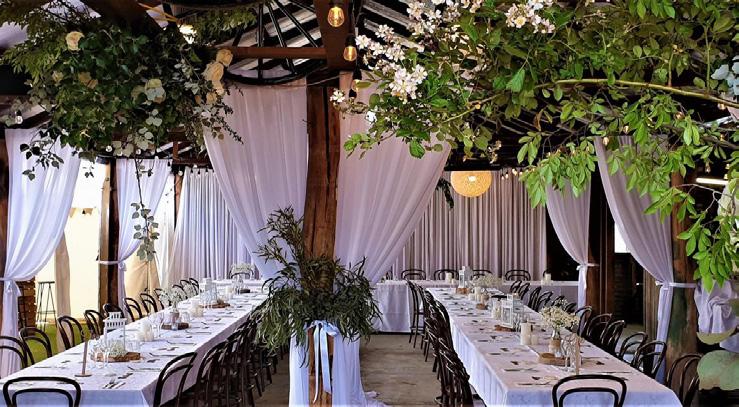
Tuggeranong Homestead offers a truly unique and unforgettable setting for your special day, blending history, natural beauty, and a personal touch.
What sets us apart from other venues is our rich heritage – the Homestead dates back to the 19th century, and its timeless charm provides a one-of-akind backdrop for your wedding. Surrounded by lush gardens, majestic elm trees, and serene woodlands. Our property feels like a secluded countryside retreat, yet we’re only minutes from the heart of Tuggeranong. Our venue is versatile, perfect for any wedding style. Whether you envision a rustic outdoor ceremony or an elegant indoor reception, our expansive grounds and beautifully restored spaces can be tailored to your vision.
From intimate gatherings to larger celebrations, we offer exclusive use of the property, ensuring privacy
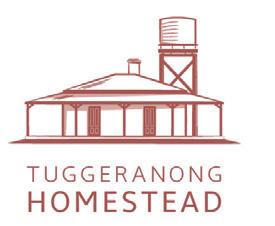

and a personal experience.
What truly makes us stand out is the personalized service we offer. We work closely with each couple to ensure every detail is exactly as you dream it. From expert guidance to crafting a customized menu made from scratch on the day, we ensure your celebration is flawless.
Plus, we offer a curated selection of world-class wines and our very own local gin to complement your event.
Tuggeranong Homestead isn’t just a wedding venue – it’s a place to create lasting memories, rich with history and heart. Let us help make your dream wedding come true.
Tuggeranong Homestead 130 Johnson Drive, Richardson. Call 0419 533 298 or visit canberrahomestead.com
• PRIVATE DANCING LESSONS
– Individuals or Groups
– Perfect for Wedding Parties BY APPOINTMENT
• KIDS MEDAL CLASSES
Thursdays from 5pm at the Pearce Community Centre, building 2, Collett Place Pearce.
• ADULT BEGINNER CLASSES
Wednesday 7.30pm-8.30pm
• ADULT INTERMEDIATE & ADVANCED
Wednesday 8.30pm-9.30pm
ADULT CLASSES NOW AT: WESTON NEIGHBOURHOOD HALL, HILDER STREET, WESTON
Phone: 0407 066 110
Email: dale_harris@bigpond.com
Web: dalesballroomdancing.com
Principal: Dale Harris








“Unfortunately, as we get older the pancreas produces less insulin meaning there’s a higher risk, especially for type 2 diabetes,” she says.
“That’s why it’s so important for us to continue raising awareness, for people to have a conversation with their GP or health-care provider and get screened every year.”
Natalie says that the earlier diabetes is detected, the faster treatment and lifestyle changes can begin to stop or delay complications such as heart disease and amputations.
“There is support out there, and I am seeing more and more stories of people who are diagnosed early that are going into remission,” she says.
living with it, too.”
She says Diabetes Australia has an online risk calculator where people can measure how much risk they’re at of the chronic illness.
“It calculates cultural, genetic and lifestyle factors that contribute, and we encourage everyone to do it,” says Natalie.
It’s just one of the many services the organisation offers to help people living with the condition.
“If you’re diagnosed with diabetes, don’t panic, come and talk with us,” says Natalie.
Diabetes Australia Call 1800 177055, or visit diabetesaustralia.com.au
Osteoarthritis is one of Australia’s most common chronic conditions, often causing pain, stiffness, and loss of independence. Yet thanks to a local initiative, hundreds of Canberrans are learning that joint pain doesn’t have to mean slowing down.
At the forefront of this effort is the team at Arthritis ACT. Rebecca Davey, CEO of Arthritis ACT, says the right education and exercise can dramatically change outcomes. “Osteoarthritis doesn’t have to end in surgery,” she says. “When people understand how to move safely and strengthen their joints, they take control of their pain.”
“We have a team of physiotherapists, including Dr Jacqui Couldrick PhD, who recently completed her doctorate on the outcomes of the GLA:D® (Good Life with




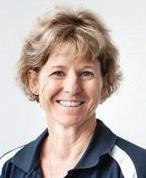
Our team of physiotherapists can support you with:
• GLA:D® Program for hip and knee osteoarthritis
• Education on self-management and joint health
• Supervised group sessions to build strength and confidence
• Pain management and strategies to reduce medication use
• Tailored support to prepare for or avoid joint replacement surgery
• Ongoing care with our exercise physiologists and exercise scientists
Our physiotherapists work closely with our exercise physiologists and exercise scientists, so if you need hydrotherapy or other exercise support, you can keep your care in the hands of one practice.
Jacqui Couldrick is a physiotherapist with over 20 years’ experience in sports injuries and musculoskeletal conditions, including work with the Australian Defence Force. She has a PhD on exercise therapy for knee osteoarthritis and delivers programs such as GLA:D® and PEAK at Arthritis ACT. Jacqui is passionate about nonsurgical, evidence-based interventions and teaches the GLA:D® course nationally.

Emil has come to Arthritis ACT highly recommended by clients he has worked with previously. With experience in the hospital system and private practice, Emil has interests in neurology, chronic pain and sports injury management and prevention. Emil is a soccer fan and assists local clubs in his spare time on weekends.

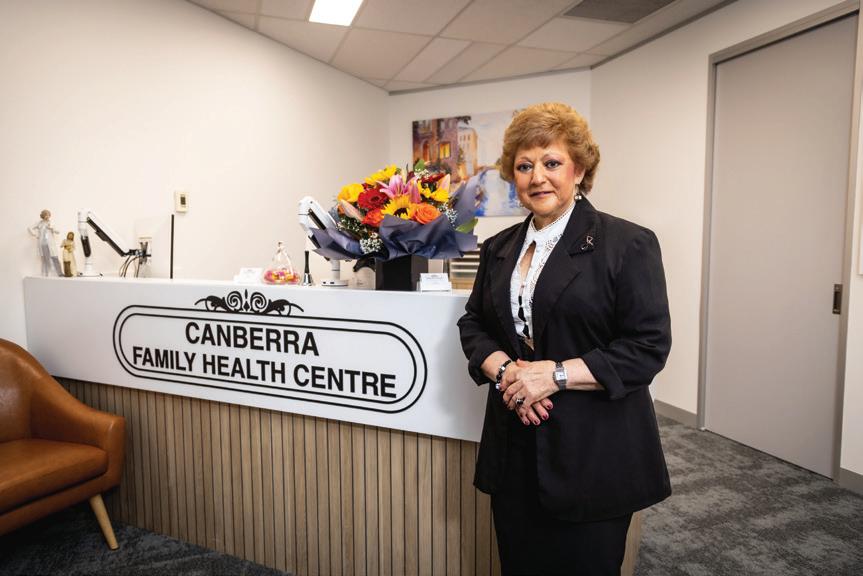
As the clinic’s founder and principal practitioner, Dr Badawy leads her Deakin practice with a focus on compassionate, patient-centred care, and she is now welcoming new patients.
“There is no small amount of joy to be had from daily interactions with patients,” she says. “I’ve had the privilege of rejoicing with my patients in their successes and supporting them through their challenges.”
Dr Badawy’s approach is grounded in genuine connection. She offers comprehensive one-hour appointments, ensuring every patient has time to be heard, understood, and supported with a personalised care plan.
“I believe in being thorough and taking the time
Located in the heart of Canberra’s medical precinct in Deakin
At Canberra Family Health Centre, we are dedicated to providing comprehensive, patient-focused healthcare for individuals and families. Located centrally in Deakin, our centre offers a wide range of medical services designed to meet your health needs at every stage of life.

A Fellow of both the Royal Australian College of General Practitioners with unrestricted General and Specialist Registration with AHPRA, and the Hong Kong Academy of Medicine in the discipline of Family Medicine.
Dr Badawy also holds a Master and Graduate Diploma in Family Medicine, in addition to Bachelor of Medicine/Bachelor of Surgery Degree, and is a Member of the Australasian Menopause Society.
Canberra Family Health Centre Peter Yorke Building, Suite 6, Level 3, 173 Strickland Crescent, Deakin. Call 5133 7112 or visit cfhc.com.au

Associate Professor Maryse Badawy
MB/ BS Degree, FRACGP, FHKAM (Family Medicine), Grad Dip Fam Med, Master Family Medicine, Member Australasian Menopause Society
National and International Family Medicine and Academic experience.

HIGHER Function offers a range of classes that are taught by experienced physiotherapists and exercise physiologists, using evidence-based exercises, says physiotherapist Andrea Rich.
“Strong Bones is a group class designed specifically for people with osteoporosis and osteopenia (low bone density),” she says.
“This class focuses on exercises to safely improve bone density – stomping, holding weights – and incorporates strength training, mobility and balance exercises to improve overall mobility and prevent falls.
“Strength For Life is a class for people over the age of 50 in which you receive your own personalised strength and exercise program and are working towards your own individual goals.
“Golf Fit is great for those who want to play longer games of golf without pain, prevent injuries
and improve mobility, strength, power and speed.”
Andrea says people come to class to work hard, get stronger and reduce their pain, but the atmosphere is still fun and friendly.
“Lots of people have become friends and go for a well-earned coffee after classes,” she says.
“Our small group classes allow for everyone to receive attention from the therapist, ensuring they are performing exercises correctly, safely and can offer modifications where needed.”
“We have a 90-year-old client who attends three classes a week. We have lots of fun but are still working hard.”
Higher Function Physio & Pilates Suite 4, Level 1/23 Petrie Plaza. Call 6262 9664 or visit higherfunction.com.au
• Strength for Life (over 50’s)
• Strong Bones (osteopenia / osteoporosis)
• GLA:D (knee / hip osteoarthritis )

A woman came into my clinic for a consultation about her hearing aids, telling me her hearing aids were 4 years old and she had never found them to be of much help. She said the salesperson quoted her $14,000 for a pair of hearing aids, however, the monthly special of 20% discount meant they cost her $11,200. So, she ‘only’ paid $11,200 for hearing aids that did not help her. Sadly, I hear this all too often.
Here are some things to do to avoid this type of problem:
1. Visit your GP. If you or someone you know has a problem with their hearing, visiting your GP to check for wax in the ears, and to get advice is a starting point.
2. Qualifications. Always check the qualifications of the person you are dealing with. A person without professional qualifications has no business advising you about your hearing. They need to belong to a professional association with a Code of Conduct, so you know they are acting in your best interests, not their own.
years. If you are not sure about their advice, then seek a second opinion. The wrong hearing aids can be an expensive waste and could lead you to stop wearing them. You should always have a trial of hearing aids to ensure that they are right for you.
6 Pensioners and eligible DVA card holders often have entitlement to free services. If you are covered by a government concession, then let the clinician know (even though your clinician should ask). Eligible clients may obtain free hearing tests, consultations, and free hearing aids (referred to as fully subsidized hearing aids).
“A person without professional qualifications has no business advising you about your hearing. They need to belong to a professional association with a Code of Conduct, so you know they are acting in your best interests, not their own.”
– Dr Vass
These hearing aids are appropriate for many people, however if you have great difficulty hearing in background noise (for example a restaurant), then you may want to consider partially subsidized hearing aids. This is when the government pays a certain amount, and you pay for additional features and benefits. Your decision should be based on the following:
you are dealing with a qualified clinician, then they belong to a professional association. The best contact is an independent complaints body referred to as Ethics Review Committee. You can email ethics@auderc.org.au and view the website www.auderc.org.au. You can make an anonymous complaint and your complaint will be handled in a confidential and professional manner. If you are in the ACT, contact the ACT Human Rights Commission email human rights@act.gov au and the website www.hrc.act.gov.au
3. Independent advice. You should get independent, professional advice.
4. There are a wide range of hearing aids out there. Finding the right hearing aids for your communication needs can be challenging. Hearing aids vary in price and performance. Bluetooth® connectivity and rechargeable hearing aids are available on most hearing aids, along with apps that allow you to control your hearing aids from your mobile device. Be aware that just because a hearing aid is more expensive, that doesn’t mean they are the best hearing aid for you.
5. Just as hearing aids vary in performance, clinicians may also vary in performance due to training, experience, and skills. Make sure that you are comfortable and confident in their advice. You are likely to be with this clinician for the life of your new hearing aids, typically 4 to 5
(a) Can you afford the more expensive hearing aids? Don’t go into financial stress if you can’t afford them. (b) Are you clear on the free vs partially subsidized features & benefits? Never believe someone who tells you the free hearings are not good or of poor performance, this is simply not true. (c) If you try the partially subsidized hearing aids and are not happy, then return them. Do not keep hearing aids because you think the failure is yours or that you will improve over time. If the hearing aids are not working for you in the trial period, then they will not work for you in a year or two.
7. If you have a complaint, then seek help. Your clinician should be able to help you through most of your needs. Sometimes, a problem may be beyond the expertise of even the best clinician. However, if you have a complaint there are things you can do. If


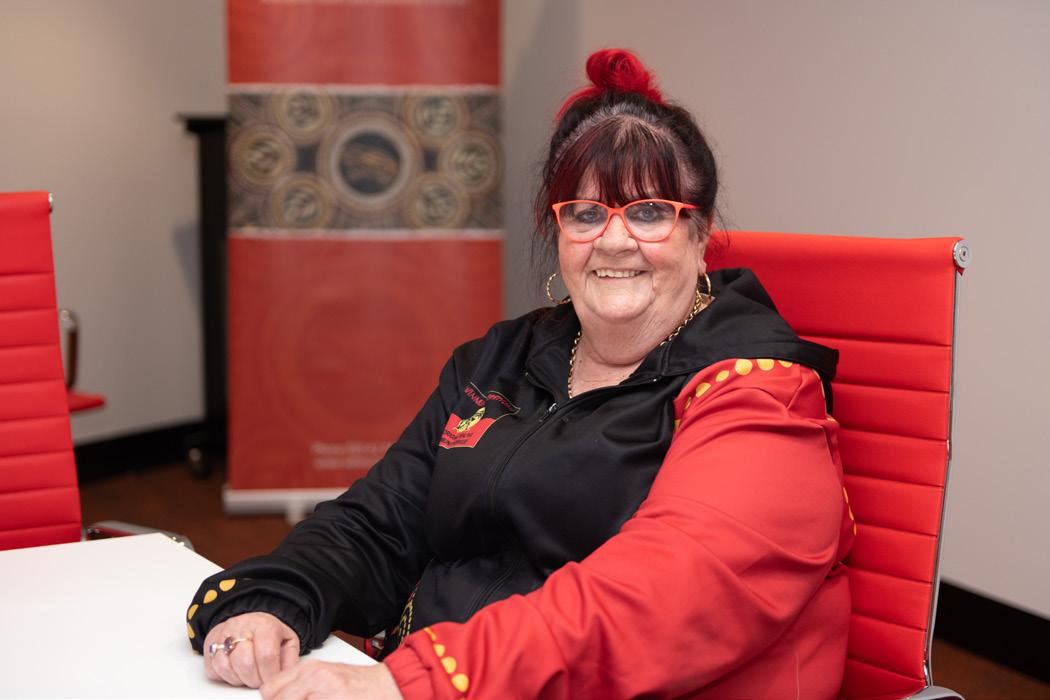

Most people rate their sight as their most precious sense, and about 80 per cent of the information we receive from the outside world comes through our eyes, says Shane Brookman, founder of the mobile optometry service, Angel Eyecare.
“This means that your eyes are the best camera you’ll ever own,” he says.
“If our health is our wealth, then sight is worth more than gold.”
Shane says 90 per cent of blindness is avoidable if detected early, which is why regular eye care is so important.
With Angel Eyecare being fully mobile, Shane
says they are able to bring the gift of sight right to the patient’s doorstep, so they can see better without having to leave the home.
“Our mission is to deliver an essential sightsaving mobile service to those who need it most,” he says.
“Making a difference by helping people see better is what gets us out of bed every morning.”
Angel Eyecare Email hello@angeleyecare.com.au or to schedule an appointment visit angeleyecare.com.au

He is passionate about sharing the




Winnunga Nimmityjah Aboriginal Health and Community Services is a community-controlled health service
in Narrabundah, providing holistic, culturally safe care to Aboriginal and Torres Strait Islander people across the ACT and surrounding regions.
WINNUNGA OFFERS A WIDE RANGE OF SERVICES, INCLUDING:
Health and Medical Care
• GP and specialist clinics
• Aboriginal Health Workers
• Chronic disease support, pathology, immunisations, dental, optometry, and more
Pregnancy, Parenting and Family Support
• AFPP: Free support for young, first-time Aboriginal mums from pregnancy to bub’s second birthday
• Healthy Pregnancy Group & Childbirth Classes
• Mums and Bubs Clinic
Quit Smoking Support
• Free nicotine replacement therapy, personalised quit plans, and culturally safe support through the Tackling Indigenous Smoking program.
Social and Emotional Wellbeing
• Counselling and mental health support
• Drug and alcohol programs
• NDIS, court and justice support
Community and Justice Programs
• Men’s and women’s groups
• Yarning circles, nutrition and healing programs
• Support for people in custody and post-release







By Jackie WARBURTON




focal point for a small garden that almost takes little or no room is a trompe l’oeil (a French term meaning “deceive the
It can be used on a plain wall, to brighten up a dark space, a partition or even incorporated into a water feature.
Traditionally, it is made with lattice panelling and can have mirrors added to create a 3D illusion of depth and the use of shadow and light to deceive the eye.
NOVEMBER is vegetable month
and the message is to get it all in and growing fast!
All summer crops, such as pumpkins, zucchinis, tomatoes, can all go into the vegetable patch.
Pumpkins will need more space than you think and if the room is tight, growing the vine on a low fence can work.
When the vine is around four to five metres long, trim the end off to encourage side branching and, in turn, this will encourage female flowers.
Male flowers are produced first on the vine and, as it matures, the female flowers will come.
There are a few ways to tell the difference in the flowers – the males are smaller overall and the much larger female will have a bump at the base of the flower.
Flowers will open in the morning so ensure the vine has morning sun


when the bees are out. Female flowers can be pollinated by brushing on pollen collected from the male flower with a soft paint brush. This will increase the chances of fruit forming and not dropping off.
Prevent any overhead watering to keep powdery mildew at bay.
Pumpkin flowers are edible and can be prepared in the kitchen the same way as zucchini flowers.
Parsnips take at least 120-180 days from seed to root and can be planted into the garden now as seed.
They like a little more organic matter than carrots, but are slow to germinate and just won’t in cold soil
Most importantly, only grow from fresh seed.
All root vegetables should be direct sown to a depth of five millimetres and five to 10 centimetres apart in rows.
Keep them moist (but not wet) and covered with light shade cloth until germination.
Parsnips can also be sown in early autumn while the soil is still warm for harvest in spring.
PELARGONIUMS grow well in our climate in full sun and in pots.
All pelargoniums need to be regularly watered to keep their flowering display for many months.
Grow pelargoniums close to the house to appreciate the fragrance from the flowers. Also, the plants themselves can repel insects such as mosquitoes and flies.
Some pelargoniums are edible, and petals can be used in desserts and to flavour teas.
There is a native geranium called pelargonium australe, which grows as a small, long-flowering ground cover to 50 centimetres high and has mauve, pink flowers held above the leaves.
Another long-flowering local pelargonium to look out for is P. rodneyanum, which has magenta flowers and is slightly smaller. A mixed planting would make a fine display and, given the right climate, would gently self-seed.
jackwar@home.netspeed.com.au
• Prune lilac lightly after flowering.
• Keep watering lawns through hot days.
• Prune all spring flowering shrubs now.
• Deadhead roses down to a set of five leaves.




COVER STORY
By Helen Musa

Michael Simic, one of the most colourful stage personalities ever to emerge from the Canberra region, is the 2025 Canberra CityNews Artist of the Year.
He was named at the annual ACT Arts Awards, held at the ANU Drill Hall Gallery on November 11. He received a certificate and a $1000 prize.
Better known through his flamboyant stage persona Mikelangelo, Simic and his band, The Black Sea Gentlemen, have performed to sold-out audiences on London’s West End and at major festivals across the UK, Europe, NZ, Canada and the US.
It all began in Canberra, where Simic was born in 1969 and of which he remains immensely proud, saying: “I feel like I’m part of the wellspring of Canberra creativity.”
With his larger-than-life stage presence and faux-Balkan accent – a nod to his Croatian heritage – Simic was praised by the Canberra Critics’ Circle as a “consummate professional entertainer”
BY KENDALL FEAVER

A profound and compelling study of a young woman trying to discover where her illness ends and her identity begins.
19 – 22 November
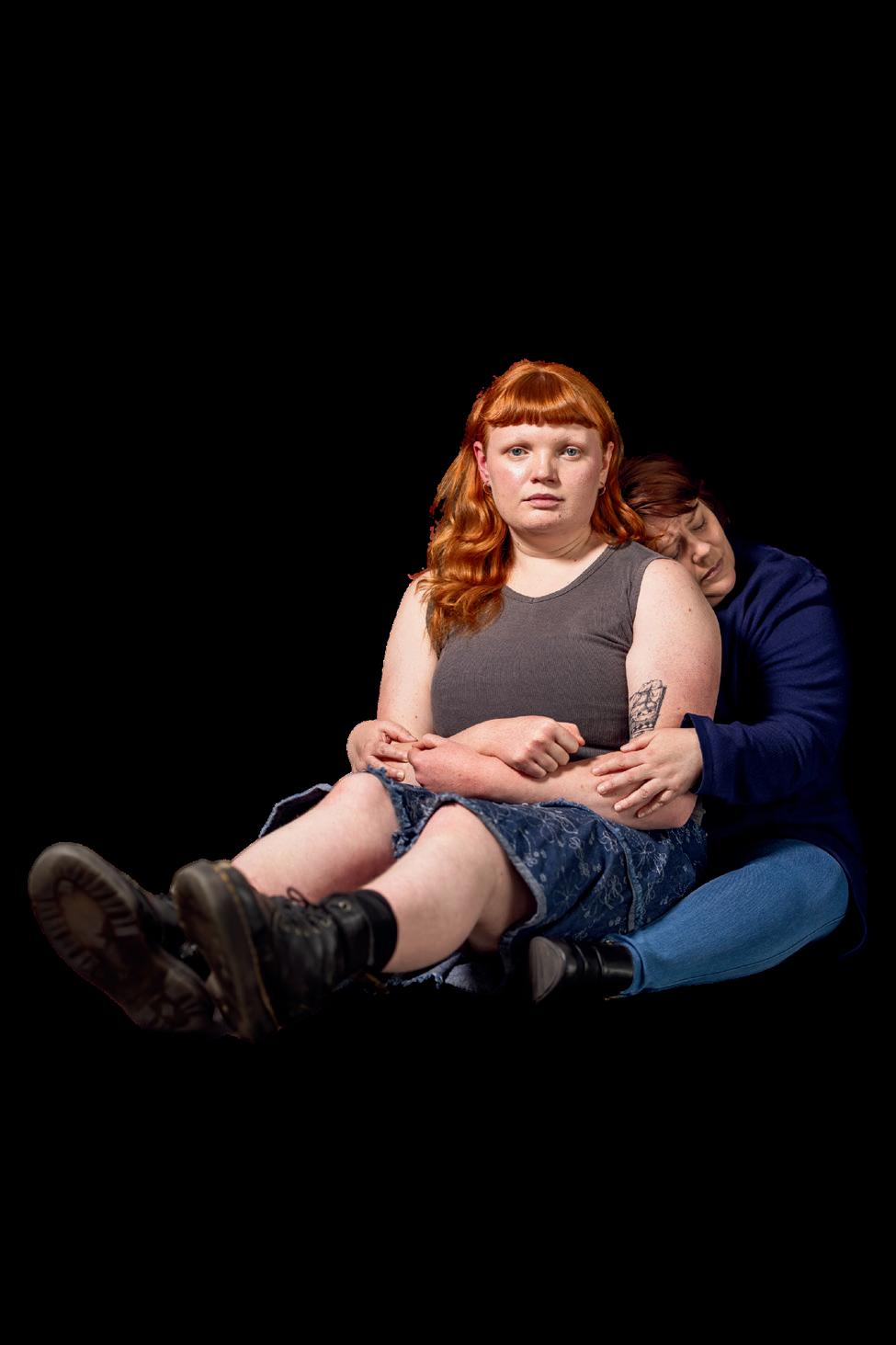
This month marks the return of one of Netflix’s biggest fantasy hits but its days be numbered.
The Witcher, which tells the epic tales of monster hunter Geralt of Rivia, is back for its blockbuster fourth season.
For those unfamiliar with the series, Geralt is a genetically mutated man made to hunt down beasts that traverse the kingdom for coin. But as some might guess, it turns out the most monstrous of his foes are the kings, bandits and other more human creatures that he encounters in his travels.
This time though it’s not Henry Cavill who’s playing the pale-haired hero.
The Superman actor became beloved in the role and was a huge drawcard to the series, which is based on a series of books by Polish author Andrzej Sapkowski.
Despite the popularity, Cavill opted to drop out after season three, which aired two years ago.
Why? Well that’s never been publicly revealed but the rumours suggest he wasn’t happy with the direction the show was going.
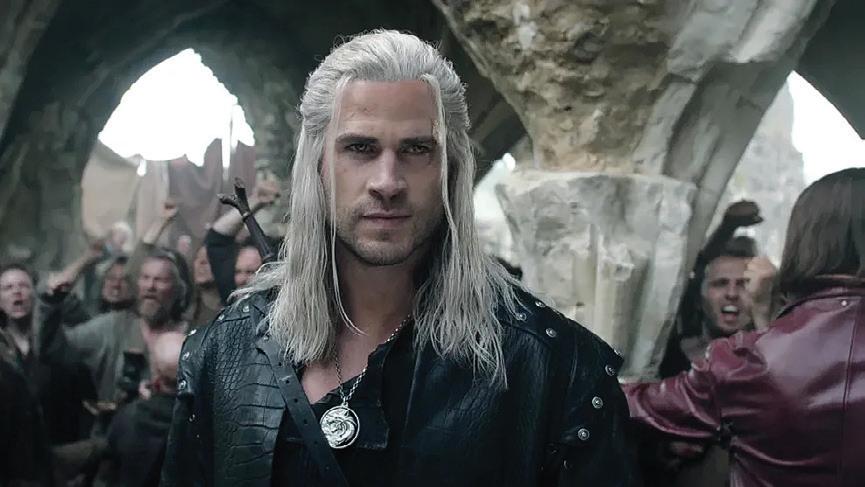
Cavill is known to be a big fan of the books and the video game adaptations that inspired the series and wanted his character to more accurately reflect what was in the source material.
But it was “no deal” with the writers, who were firm on taking the show in their own direction.
In doing so, they lost their charismatic leading man.
Who next to pick up the sword? Aussie star Liam Hemsworth.
In some ways I kind of feel sorry for poor Liam (barring his no doubt enormous pay cheque). He’s had enormous boots to fill and has essentially been left to save the show after Cavill’s departure.
The Witcher has something of a cult following and so fans were always going to be wary of any outsider coming in.
How’s he gone?
Well, according to the fanfare, not great.

absolutely slammed.
On IMDB, which aggregates audience reviews, the first episode has slumped to an average of 4.3/10.
Compare that with the first episode of the first season, which still holds an 8.2.
That’s not to mention a flurry of memes that have hit social media, poking fun at Hemsworth’s performance.
So far the viewership for season four hasn’t been spectacular either. Some early reporting suggests demand is around 30 times lower than previous seasons.

The numbers don’t look good when you consider that Netflix has paid around $US27 million for every episode. A massive whack to the wallet if it’s not going to make a return.
That all pretty much sums up where The Witcher might be heading.
Like many of the grizzly characters in the show, it’s pretty safe to say Netflix won’t be far from bringing down the axe.
PRIME Video is turning heads this month with its new British psychological thriller
It stars Jack Whitehall as Adam Healey, a seemingly harmless nanny who is in for the big bucks when he secures a job sitting for an uber rich family.
But Adam’s intentions aren’t as wholesome as they first appear.
He has a plan to tear the family apart from the inside and take home the winnings from
To say why would be to spoil, but it’s not like before the mum and dad of this wealthy household are forced to confront the reality that their enemy is right under the roof.
Whitehall’s a cracking choice here. He’s known for his comedic timing and Malice gives him a chance to show off his funny side while also putting on show some solid
X-Files alumni David Duchovny also stars in this series which has six episodes out to stream.
It’s easy but engaging viewing with a scheming premise that’s more than easy fall for.

By Helen MUSA

The Australian Chamber Orches tra will close its 50th anniversary season with a flourish, inviting audiences to step back into 1920s Paris in Cocteau’s Circle. Cabaret, opera and drag star Le Gateau Chocolat joins Canberra-trained soprano Chloe Lankshear, under the direction of Circa’s Yaron Lifschitz, at Llewellyn Hall, November 22.
The National Capital Orchestra takes to the stage with Broadway! – a spectacular concert packed with hits from My Fair Lady, Carousel, The Wizard of Oz and others, conducted by Louis Sharpe. Snow Concert Hall, November 16.
Canberra artist Eryn Marshall unveils Envy, Upcycled, a deeply personal solo exhibition exploring resilience and self-worth through art made from recycled materials created in partnership with the Butterfly Foundation. Queanbeyan Performing Arts Centre, November 18.
For its final Smith’s@Belco gig of the year, Australian Idol winner Damien Leith performs an intimate acoustic tribute to the music of Roy Orbison. Belconnen Arts Centre, November 22.

Cabaret, opera and drag star Le Gateau Chocolat… Llewellyn Hall, November 22.
Fijian-Australian writer Satendra Nandan launches Poems 1975-2025: Waves in the Wounded Sea, a volume spanning 50 years of poetic reflection. The evening features readings and discussions with Frank Bongiorno, Peter Putnis, Will Christie, and contributions by Sara-Lynne Simpson and Gitanjali Nandan. The Street Theatre, November 21.
Rounding off Musica Viva Australia’s 80th anniversary season, Polish-Hungarian pianist Piotr Anderszewski returns to Australia for his first recital tour in over a decade, bringing fresh insight to works by Brahms, Bach and Beethoven. Llewellyn Hall, November 21.
Baritone David Greco joins pianist Roland Peelman for Love Lost and Love Found, the finale of Art Song Canberra’s 2025 season. Wesley Music Centre, November 16.
The inaugural Canberra Fringe brings three days and 15 acts drawn from across the country – including three local artists – offering affordable, boundary-pushing entertainment. The Pot Belly, Belconnen, November 21-23.
English actor Richard Griffiths once famously said of Peter Shaffer’s Equus: “It’s not a whodunnit. It’s a why-dunnit”.
That’s because, right from the outset, we know that a troubled boy, Alan Strang, has committed a horrendous act of violence against six horses – which is why he ends up on the couch of psychiatrist Martin Dysart, himself troubled by a midlife crisis and worse.
The play, presented through Dysart’s eyes, exposes the layers bit by bit until we reach the core of the violence. But at the heart of the drama is Shaffer’s fascination with the ecstatic experience – something not available to most of us.
Consigned to the mundane world, Dysart can only wonder at the religious fervour of young Alan’s encounter with horses, especially his favourite horse, Nugget.

This theme is exactly paralleled in Shaffer’s Amadeus, where moderately-talented Salieri is consumed with envy of the youthful Mozart’s genius, and again in The Royal Hunt of the Sun, where the ageing conquistador Pizarro comes face-to-face with the holy king Atahualpa.
One critic called it “god-hunting”, and there’s more than a touch of that, as I find when I catch up with veteran Canberra actor Arran McKenna, who gets the plum role of Dysart in Anne Somes’ coming production.
“I think it still works,” McKenna says. “It’s one of my favourite plays – I also did it years ago with Free-Rain Theatre at The
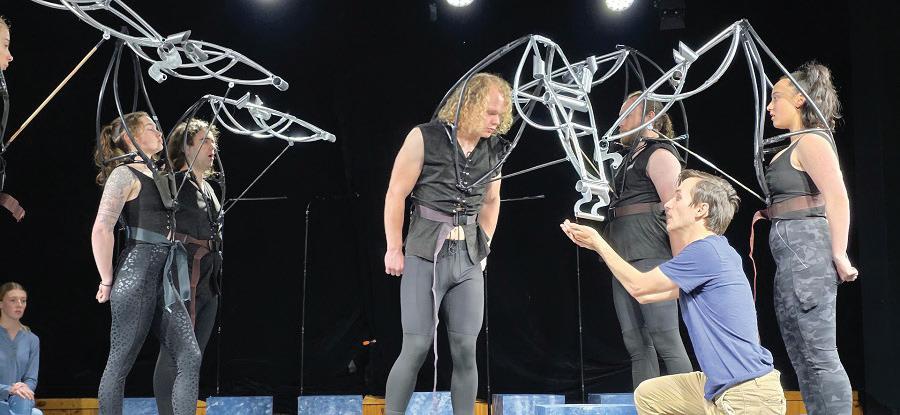
Courtyard Studio.”
“Shaffer likes playing around with ceremony and high ritual and Anne [Somes] has gone with that, although she’s reimagined the horses – you can’t have big horses tearing up a heritage building.
“Psychiatry has moved on since the 1970s, but the themes of passion and worship are still very relevant. It’s a good subject for theatre, where people are very passionate.”
Some people think it’s Alan’s play, but as he points out, it’s Dysart who constructs the
story for the audience.
Jack Shanahan, who plays Alan, is a little older than the character, but as McKenna says: “He plays young very well – he brings a really good brain and sensibility to the role.”
The action begins when Alan commits an act of violence against six horses and Dysart is called in – and yes, there will be warnings about animal cruelty at ACT Hub.
His character, McKenna says, has an academic appreciation of the ancient Greek gods, but when confronted with someone
By Helen Musa
The 2025 Helen Tsongas Award for Excellence in Acting goes to a performer who began as one of Canberra’s bestknown TV and radio presenters before turning to the stage in the early 2000s.
Andrea Close, described by members of the Canberra Critics’ Circle as “a formidable figure in Canberra’s arts community”, has been recognised for her commanding performances this year – as the Machiavellian sister Agatha in The Moors at The Mill Theatre (March-April) and as the powerful corporate figure Jen Lay in Enron, also at The Mill (July-August).
“The Mill Theatre is so tiny,” Close says. “Sometimes the audience has to move their feet to let the actors get by. I love that kind of intimacy – I draw great energy from the room.” Close has built a reputation for playing full-on, formidable characters such as Agatha and Jen, Martha in Who’s Afraid of Virginia Woolf, and Judith Bliss in Noël Coward’s Hay Fever. The latter was a rare comic role, though she recalls that her first CAT Award came years ago for playing Patsy in a stage version of Absolutely Fabulous.

“Let’s face it, I’ve never been cast as a shy or retiring type,” she says. “I’m physically tall, I have a strong voice and strong features, so people tend to relate to me in powerful roles. And now that I’m in my late 50s, I think you grow stronger and more confident as you get older – more inner strength.”
A familiar voice and face from more than two decades as a presenter on local ABC radio, and before that on WIN TV and Capital 10 News, Close has since retired from broadcasting. She now works quietly as a public servant, enjoying life with her dog Johnnie while preparing for her stage roles.
The late Helen Tsongas, who would have turned 47 this month, was a much-admired actor celebrated for her work in tragedy and comedy. She and her husband were killed in a motorcycle accident in 2011 shortly after their marriage.
Her family established the award in her memory. It carries a prize of $1000 and a certificate recognising the best Canberra actor of the year, with no restrictions on age or gender, as judged by the theatre panels of the Canberra
who actually lives those beliefs, he’s shocked and ultimately envious.
“I’m a person who loves what people are passionate about,” McKenna says, hinting that things don’t look good for Dysart, whose own midlife crisis and strained marriage combine with tricks of the psychiatric trade as he strives to take away the young man’s pain — and with it, his direct contact with the god-like horse figure.
McKenna works by day as a freelance creative graphic recorder, listening at live
conferences or meetings and visually capturing key ideas using drawings and text – so he’s a keen observer and listener.
Through modern psychiatry, he suspects, Alan’s pain could perhaps be turned into something productive – but that’s not what the play is about.
You’ll just have to be there to see why-dunnit.
Equus, ACT Hub, Free Rain Theatre, Kingston, until November 22.






Kathmandu Momo House on Northbourne Avenue, Civic, specialises in Nepalese and Indian cuisines.
A lovely water feature graces the front of the restaurant, and the décor is colourful and tasteful, including the wood carvings.
We sat at the front window and, while the views of buses moving through the Jolimont area aren’t exactly pretty, the food makes up for the lack of scenery.
Nepalese food is darn tasty and features a long list of aromatic spices and chilli for kick.
Our lunch began with crunchy papadums ($8), which got our taste buds dancing.
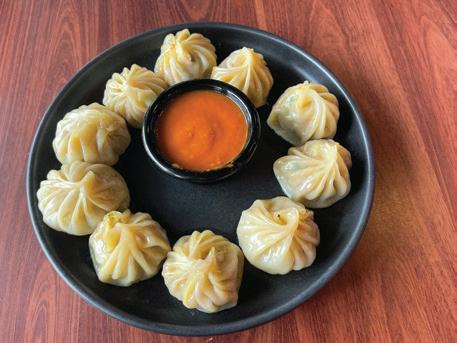
Big fans of momos (Nepalese dumplings), we ordered the steamed chicken version, which didn’t disappoint ($20.90). They were carefully plated to form a perfect circle, and we dipped them into a bowl of spicy, tomato-based sauce placed in the middle, enjoying each bite with a lovely, crisp rosé we bought from a nearby bottle shop.
For a change, we gave the Newark chatamari a go. This traditional Nepalese rice crepe is said to emerge from the celebrated Newa cuisine of Kathmandu Valley.
It looked very much like a frittata to us and was a pleasant enough dish, although slightly burnt around part of the edge. The egg mixture was topped with slices of shallots and red onion.
Wanting a heavier boost of flavour, we selected the prawn tikka masala, vibrant orange in colour and loaded with plump prawns ($25.90).
Kathmandu Momo House also offers this dish with chicken or lamb and mild to medium heat.



It’s cooked in a special house-made masala sauce and finished off with a swirl of cream.
For a vegetable curry hit, we headed for the palak aloo, created with potatoes and spinach and simmered in a fragrant blend of spices ($21.90), which we soaked up with freshly made naan bread ($5).
It was service with a smile on our arrival, but matters soon got confusing. Our Newark chatamari didn’t arrive after the momos as we asked. Instead, we were served our other dishes and had to inquire as to the whereabouts of the crepe.
Despite the more elegant décor, Kathmandu
Momo House doesn’t set tables. Cutlery and serviettes are found in wooden boxes on the table. We were ignored after our two mains arrived. No one popped by to ask how we were doing or if we wanted anything else, including dessert (we had our eye on a mango sweet, but lost the motivation).
After waiting patiently for the bill, we gave up waiting. One of our party got up and went to pay. It made for a flat and frustrating ending.
Tasmanian wineries are doing well, especially in the production of pinot noir.
It is my favourite varietal: versatile, reflective of the terroir, food friendly and often both complex and delicate.
Tasmania is producing some excellent examples of pinot noir. According to Wine Australia statistics pinot noir was 43 per cent of Tasmania’s wine grape production up to 2019.
In the 2025 National Wine Show awards, the Stargazer 2022 Palisander Vineyard Pinot Noir was awarded a gold medal and allocated 95 points out of 100.
Samantha Connew is the winemaker at Stargazer, located in the Coal Valley Tasmania. I’ve tried three of her wines and found them to be textural and complex, worthwhile drinking, with the pinot noir tasted at the wine show, expressive and velvet like.
The wine I was sent for review, the Tamar Ridge 2022 Research Series Pinot Noir, got a silver medal at the 2025 National Wine Show and was allocated 93 points, just a nudge behind the gold-medal winners.

Brown Family Wine Group’s Tasmanian wine brand
Tamar Ridge has released three new pinot noir expressions: Tamar Ridge Research Series Pinot Noir 2022, Tamar Ridge Single

I decided to review the Research Series, given its silver-medal status and because, unusually, it is made using two distinct methods: a bespoke dry yeast fermentation as well as carbonic maceration, a two-headed approach if there ever was one.
The parcel that underwent this latter treatment had to be blended with the yeastinfused parcel because carbonic maceration is a whole-bunch fermentation technique in which the first phase of fermentation is conducted in a completely anaerobic atmosphere. In this process a small amount of malic acid and sugar in grapes is converted to ethanol (drinking alcohol), along with traces of many aromatic compounds, without the intervention of yeast.
I tried the Research Series over dinner with my two adult children. The wine was paired with oven-baked salmon that had been marinated in lemon juice and a third of a bottle of NZ rose’.
The usual stance is to pair white wine with fish. But, in my experience, pinot noir often matches well with richer fish dishes such as salmon or baked trout.

At first opening, the wine was astringent and had a harsh finish. It needed air. The solution was to decant the wine, undertaken with care by my daughter.
The bouquet and taste were transformed after decanting and a little time, becoming respectively more pleasant and more complex.
The nose reflected cherry and earthy notes that translated into a fuller bodied pinot noir than many others I’ve tried recently. This wine was layered when compared with say the very pleasant but much lighter Lark Hill pinot noir, albeit there was a cherry and red fruit mix in both.
The main difference lay in the Tasmanian wine being more earthy and complex with a spicy finish not evident in the local wine.
I think the local wine would have gone better with the fish and the Tasmanian wine would pair better with game or duck.
The Research Series wine changed markedly after even more time (we’d moved on to dessert of brownies) with the forest-floor element predominant.
The wine was extraordinary in the way it changed so much in the glass. But it was a motivator to refill the glass to reassess the taste and the wine bottle was emptied with a grateful nod to the Apple Isle.
How do you know if a researcher has a PHD? Don’t worry, they’ll tell you.

By Joanne Madeline Moore
ARIES (Mar 21 – Apr 20)
Monday’s Sun/Jupiter trine is fabulous for family catch-ups and DIY projects. But the New Moon (on Thursday) and the retro Mercury/Uranus and Sun/Uranus oppositions stir up your money zones. So financial surprises and dramas are likely unless you find a more sustainable way to manage cashflow. Extra work, less spending and more saving may be required. The weekend is wonderful for re-reading your favourite book or re-watching your favourite movie.
TAURUS (Apr 21 – May 21)
Bulls prefer to plod along in a methodical fashion but, this week, you could experience challenges and disruptions! The Sun and retrograde Mercury oppose Uranus (in your sign), so life could be stressful and unpredictable. If you prioritise tasks and are mentally flexible, then you’ll handle the hurly-burly with less stress and strain. Close relationships are also in a state of New Moon flux. The more adaptable you are, the better the final outcome will be.
GEMINI (May 22 – June 21)
With Mercury (your ruling planet) in retrograde mode (until November 30) you may feel anxious as your daily routine is disrupted in some way. Or your enthusiasm for a work project could overtake your ability to knuckle down and get the job done. If you promise more than you can deliver, then other people will just end up feeling disappointed. So slow down and listen to the wisdom of your inner voice. It will point you in the direction that’s right for you.
CANCER (June 22 – July 23)
This week a child, teenager, friend or lover could shock you by making a surprise move, or a group project could suddenly veer off in an unexpected direction. If you keep your adaptability muscles well-flexed, then you’ll adjust to the constantly changing landscape accordingly. With peace planet Venus visiting your friendship zone, stop sulking and stewing over a perceived slight from a work colleague or friend. It’s time to cooperate, compromise and sympathise!
LEO (July 24 – Aug 23)
Leos love to be the Top Cat but this week you need to ask yourself: “Am I leading others or just bossing them around?” If you power ahead without considering other people, then you’ll create unnecessary drama and disruption. So do your very best to accommodate the needs of those around you. Thursday’s New Moon activates your home zone so it’s a wonderful time to play gracious host or hostess, reconcile with a relative or start a creative DIY project.
VIRGO (Aug 24 – Sept 23)
When it comes to the way you think, blast out of a boring rut and jump into an exciting new phase. Use your imagination and think outside the box as the Sun, New Moon, Mercury and Venus activate your communication zone. So, stop avoiding issues and start discussing what you really want and need. But remember your ruler Mercury is retrograde, so do your best to communicate clearly. You can’t expect other people to magically read your mind!
LIBRA (Sept 24 – Oct 23)
Thursday’s New Moon illuminates your financial and self-esteem zones, so it’s a good time to celebrate the authentic you and embrace your so-called flaws. And some indulgent self-pampering (like an aromatherapy facial or a full-body massage) will increase relaxation and boost confidence. The Uranus oppositions and New Moon also highlight the importance of having a realistic budget, a smart savings plan and a well-stocked emergency fund.
SCORPIO (Oct 24 – Nov 22)
This week the Sun, New Moon, Venus and retrograde Mercury are transiting through your sign. And the Mercury/Uranus and Sun/Uranus oppositions could disrupt relationships and rattle your resilience. But it’s time to bounce back, as you demonstrate (and celebrate) your strengths – including courage and persistence. Your motto is from Scorpio actress Julia Roberts: “I’m better for all the things that have happened to me, the good and the bad.”
SAGITTARIUS (Nov 23 – Dec 21)
Sagittarians can be feisty folk, but don’t allow yourself to be drawn into an intense argument. It would be better to watch from the sidelines. With the New Moon in your privacy zone, life will also run more smoothly if you incorporate a spiritual ritual into your daily routine. Something like yoga, tai chi, chanting, meditation or contemplation. After some quality ‘me-time’ and soulful reflection, you’ll start to see things from a refreshing new perspective.
CAPRICORN (Dec 22 – Jan 20)
With the New Moon, Venus and retro Mercury visiting your hopes-and-wishes zone, it’s important to have ambitious long-term goals that you’re working towards. You’ll have to be patient, though, as you focus on bringing your dreams down to earth via a practical plan. Then – when everything is in place – you’ll know the perfect time to pounce. Your motto for the week is from birthday great, actress Goldie Hawn: “The key is to figure out what you want out of life.”
AQUARIUS (Jan 21 – Feb 19)
Uranus opposes Mercury and the Sun, which suggest a house move, family drama, uninvited guests dropping in or another kind of domestic disruption. And some Aquarians will experience changes at work. Whatever happens, strive to get the balance right between your public life and your private responsibilities. The planets also push you to reinvent a professional relationship. Just be careful you don’t get carried away and throw the baby out with the bathwater.
PISCES (Feb 20 – Mar 20)
Are your aspirations for the future ambitious enough? The New Moon favours ruminating over big-picture ideas. And there’s no room for false modesty or passive Piscean procrastination as you enjoy talking, texting, posting, promoting, socialising and circulating. The terrific Sun/Neptune trine encourages you to come up with a creative plan and then pursue it. But an unwelcome surprise could unsettle you, so hold tight and expect the unexpected!
Copyright Joanne Madeline Moore 2025
one does what? (6)
7 To stand with hand on hip and elbow bent outwards, is to stand how? (6)
12 Name a coastal resort on the Riviera. (4)
14 What are callers known as? (8)
15 What is a ticklish sensation? (4)
After OpenAI’s new ‘buy it in ChatGPT’ trial, how soon will AI be online shopping for us, asks VIBHU ARYA .
Buying and selling online with e-commerce is old news. We’re entering the age of A-commerce, where artificial intelligence (AI) is increasingly able to shop for us.
At the end of September, OpenAI launched its “Buy it in ChatGPT” trial in the US, using AI agents built to interact with us to do more of people’s browsing and shopping. The technology is known as “agentic commerce”, sometimes shortened to A-commerce.
American shoppers can now ask for shopping suggestions from US Etsy sellers within a ChatGPT chat – then buy a product immediately, without having to navigate away to look at individual shop pages.
Looking ahead, big companies are now spruiking the next phase of “autonomous A-commerce”, which experts predict could see AI checking out for some shoppers within the next few years.
But is handing over more of our shopping decisions to AI a good thing for us as shoppers, for most businesses or for the planet?
What’s possible right now?
of the rainbow? (4)
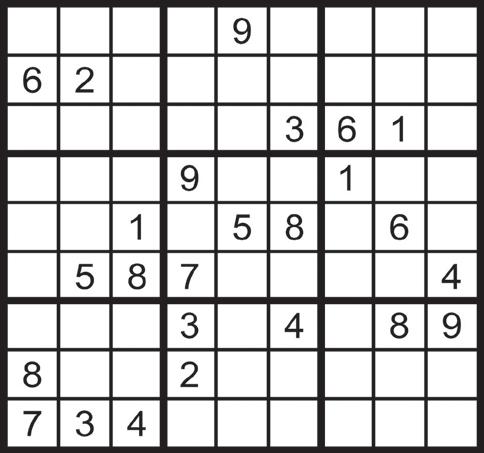

What’s next?
In May 2025, Google launched “AI mode shopping”. Some features, like using a full body photo of yourself to virtually “try-on” clothes, are still only available for US shoppers, with limited brands.
At the time, Google said its next step will be a new “agentic checkout […] in coming months” for products sold in the US. It would give shoppers the option of tracking a product until its price drops to within a set budget – then automatically prompting them to buy it, using Google Pay. That checkout option is yet to launch. Credit card giants Visa and Mastercard are also working on ways to make it easier for AI agents to shop for us.
Consultants McKinsey forecast: “We’re entering an era where AI agents won’t just assist – they’ll decide.” What are the risks and benefits?
Overspending is a big risk.
A-commerce removes many steps of the shopping journey found in e-commerce or physical commerce, leading to fewer abandoned carts and potentially higher spending.
For most people using AI to help them shop, the AI agent is still mostly just searching and recommending products. It still has to shift the customer to the retailer’s website to complete the checkout.
For instance, AI can do most steps to order a pizza – though sometimes slower than doing it yourself – apart from paying at the end.
That’s when we step in: we still need to sign in if we’re part of a loyalty program, enter our personal and delivery details, then finally pay.
With the “Buy it in ChatGPT” trial now underway in the US, the customer never leaves the chat, where the checkout is completed.
Shopify has said more than one million of its merchants will soon be able to check out within ChatGPT too. Major US retailer Walmart has similar plans.
People would need to trust AI systems with their private data and preferences, and ensure they’re not misused. Permitting AI to shop on your behalf means you are responsible for the purchase and can’t easily demand a refund. Fraud could be a real issue. Scammers could set up AI storefronts to trick the AI, collect the money and never deliver.
Banks will need to figure out how to spot fraud, process refunds, and manage consent when it’s not a person pressing “buy”, but an algorithm doing it on their behalf. Our individual and collective choices over the next few years will shape how radically shopping is about to change for years to come.
Vibhu Arya, PhD Student, UTS Business School, University of Technology Sydney. Republished from The Conversation.















